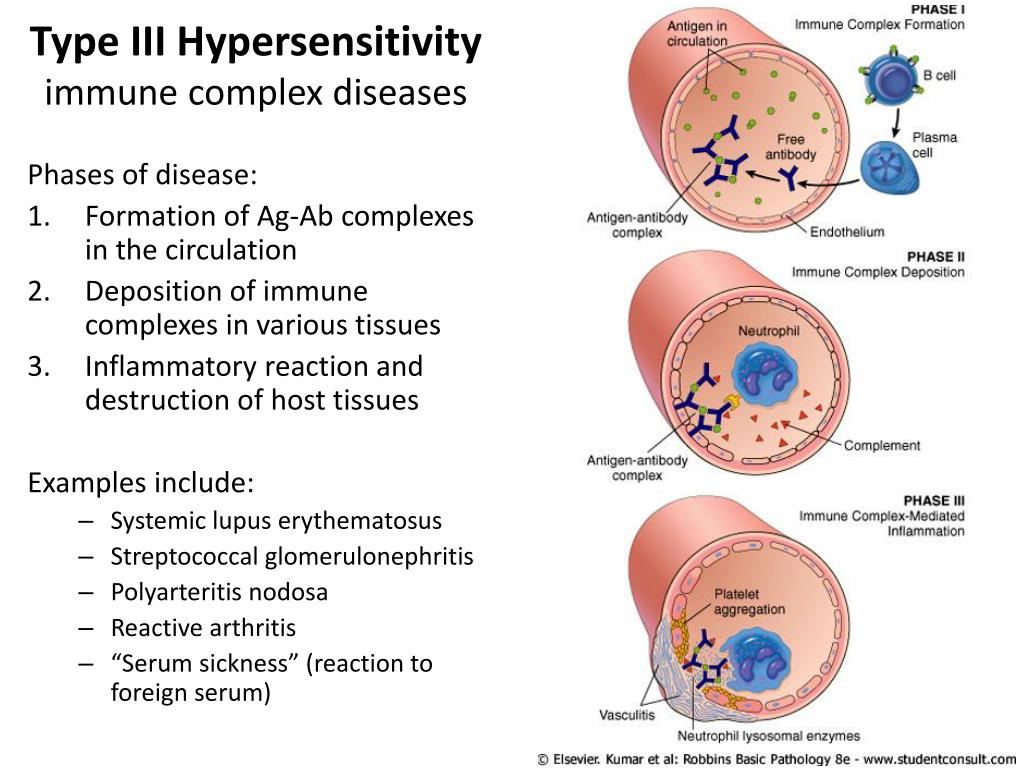Diabetic Reactions: Essential Guide to Symptoms, Treatment, and Emergency Management
What are the key symptoms of diabetic reactions. How can you effectively treat hyperglycemia and hypoglycemia. When should you seek emergency medical care for diabetes complications.
Understanding Diabetic Reactions: Hypoglycemia and Hyperglycemia
Diabetic reactions occur when blood sugar levels become dangerously high or low in people with diabetes. These fluctuations can lead to serious health emergencies if not addressed promptly. The two main types of diabetic reactions are hypoglycemia (low blood sugar) and hyperglycemia (high blood sugar).
Why do diabetic reactions happen? In both type 1 and type 2 diabetes, the body struggles to properly manage blood glucose levels. Type 1 diabetes involves the immune system destroying insulin-producing cells, while type 2 diabetes reduces the body’s ability to respond effectively to insulin. This results in blood sugar levels that can swing to dangerous extremes without proper management.
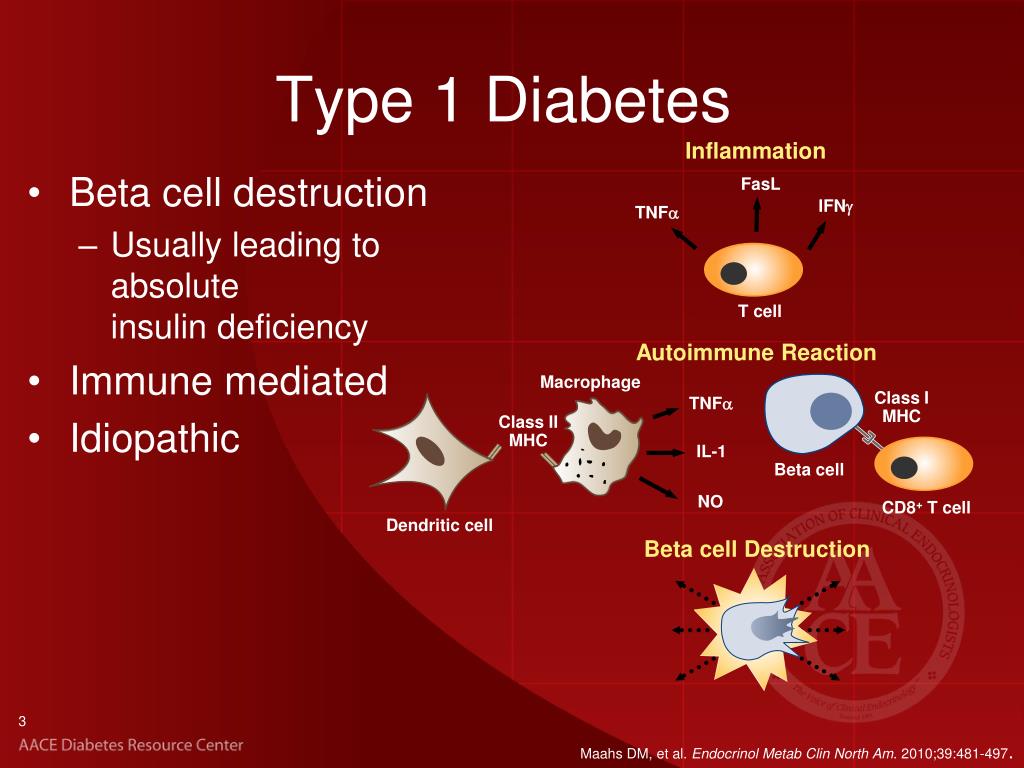
Recognizing the Signs of Hypoglycemia
Hypoglycemia occurs when blood sugar drops below 70 mg/dL. If left untreated, it can lead to seizures and become life-threatening. What are the early warning signs of hypoglycemia?
- Confusion, dizziness, and nausea
- Intense hunger
- Shakiness, nervousness, irritability
- Sweating and chills
- Rapid heartbeat
- Weakness and fatigue
- Tingling in the mouth area
- Headaches
In severe cases, hypoglycemia can progress to seizures, loss of consciousness, or coma. What causes hypoglycemia in diabetics? Common triggers include taking too much insulin, consuming excessive alcohol, missing meals, or engaging in unexpected intense exercise.
Immediate Treatment for Hypoglycemia
How should you respond to hypoglycemia symptoms? The American Diabetes Association recommends the “15-15 Rule”:
- Consume 15 grams of fast-acting carbohydrates (e.g. glucose tablets, fruit juice, or candy)
- Wait 15 minutes
- Recheck blood sugar levels
- If still below 70 mg/dL, repeat the process
- Once above 70 mg/dL, eat a balanced meal
For unconscious individuals, emergency medical services should be contacted immediately. Bystanders should not attempt to give food or drink to an unconscious person due to choking risks.
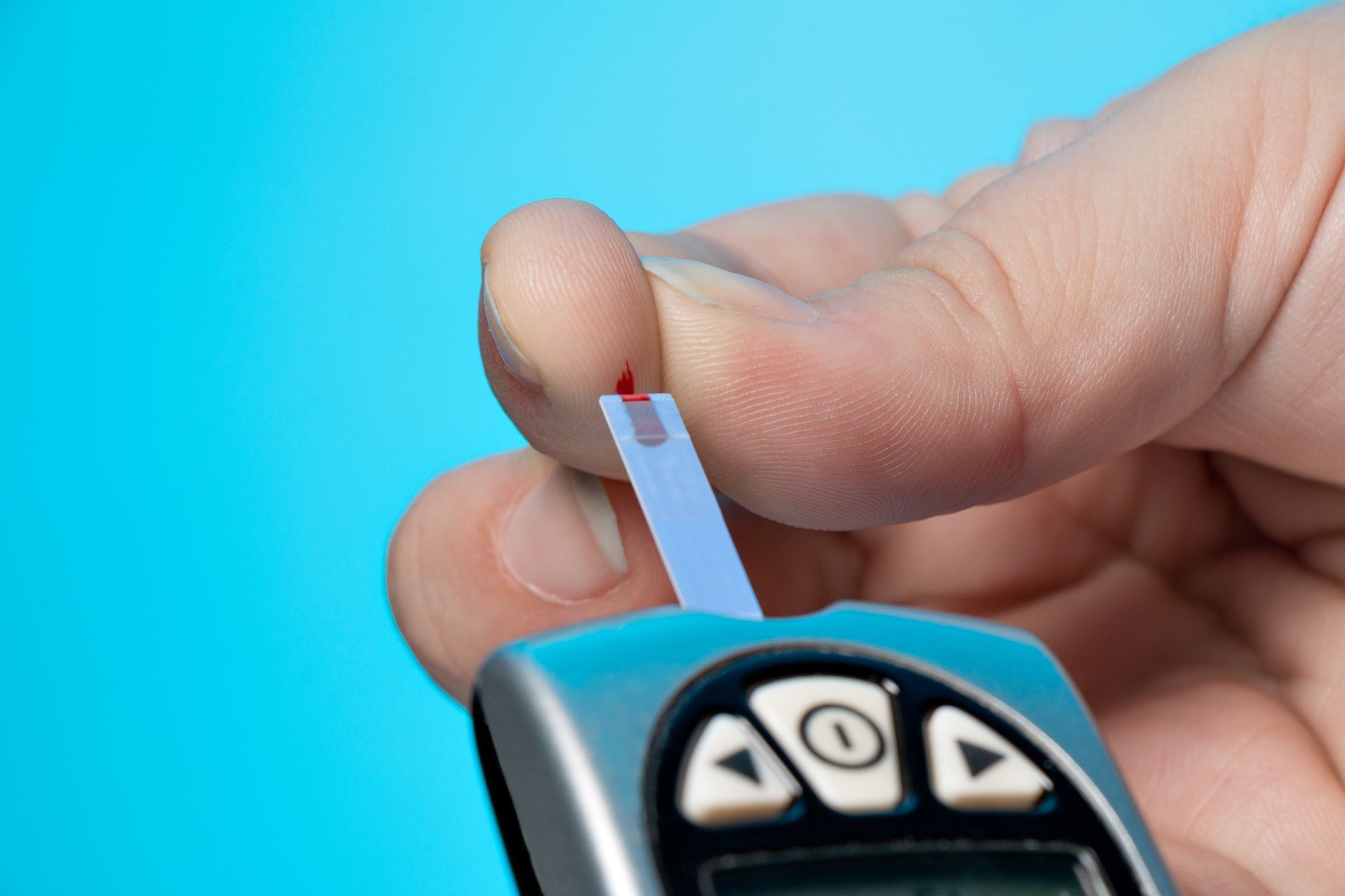
Understanding Hyperglycemia: When Blood Sugar Soars
Hyperglycemia is the opposite of hypoglycemia – it occurs when blood sugar levels become too high. This happens when the body lacks sufficient insulin or cannot use insulin effectively. What are the symptoms of hyperglycemia?
- Increased thirst and frequent urination
- Fatigue
- Blurred vision
- Headache
- Difficulty concentrating
If left untreated, hyperglycemia can lead to more severe complications like diabetic ketoacidosis (DKA) in type 1 diabetes or hyperosmolar hyperglycemic state (HHS) in type 2 diabetes. These conditions require immediate medical attention.
Managing Hyperglycemia: Treatment Approaches
How can you address high blood sugar levels? The approach depends on the severity and underlying cause:
- Increase water intake to prevent dehydration
- Exercise (if ketones are not present in the urine)
- Adjust insulin dosage as directed by a healthcare provider
- Review and modify diet if necessary
- Manage stress levels
When should you seek emergency care for hyperglycemia? If blood sugar remains consistently high despite home treatment, or if symptoms of DKA or HHS develop (such as nausea, vomiting, abdominal pain, or fruity-smelling breath), immediate medical attention is crucial.

Diabetic Ketoacidosis: A Serious Complication
Diabetic ketoacidosis (DKA) is a potentially life-threatening complication primarily affecting people with type 1 diabetes, though it can occur in type 2 diabetes as well. What causes DKA? It develops when the body cannot use glucose for energy due to insufficient insulin, leading to the breakdown of fat for fuel instead. This process produces toxic acids called ketones.
What are the symptoms of DKA?
- Excessive thirst and frequent urination
- Nausea and vomiting
- Abdominal pain
- Weakness or fatigue
- Shortness of breath
- Fruity-scented breath
- Confusion
DKA is a medical emergency requiring immediate hospital treatment. It is typically managed with intravenous fluids, insulin therapy, and close monitoring of electrolyte levels.
Preventing Diabetic Emergencies: Proactive Management Strategies
How can individuals with diabetes reduce their risk of experiencing severe reactions or complications? Proactive management is key:
- Regular blood glucose monitoring
- Adherence to prescribed medication regimens
- Maintaining a balanced diet
- Engaging in regular physical activity
- Stress management techniques
- Regular check-ups with healthcare providers
- Diabetes education to understand triggers and warning signs
Why is continuous glucose monitoring (CGM) beneficial? CGM systems can provide real-time data on blood sugar trends, allowing for more precise management and earlier intervention when levels start to fluctuate dangerously.
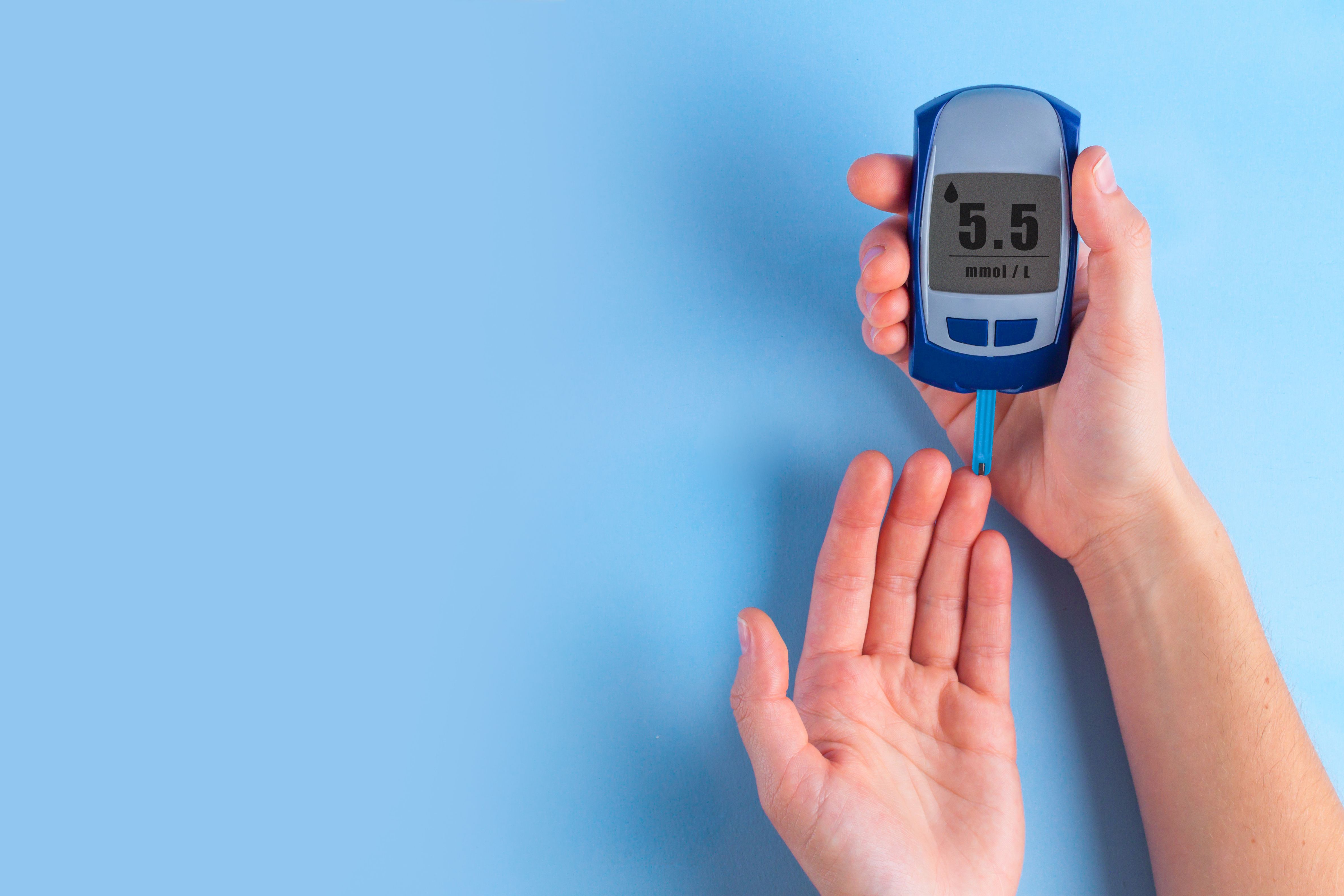
Building a Diabetes Emergency Kit
Being prepared for potential emergencies is crucial for individuals with diabetes. What should a comprehensive diabetes emergency kit contain?
- Glucose meter and extra batteries
- Test strips and lancets
- Insulin and syringes/pen needles (if insulin-dependent)
- Oral medications
- Glucagon emergency kit for severe hypoglycemia
- Fast-acting carbohydrate sources (glucose tablets, juice boxes)
- Long-acting carbohydrate sources (crackers, granola bars)
- Bottled water
- Medical ID bracelet or necklace
- Contact information for healthcare providers
How often should you check and update your emergency kit? It’s recommended to review the contents at least every 3-6 months, replacing any expired items and ensuring all necessary supplies are well-stocked.
Understanding Diabetes-Related Infections
People with diabetes are more susceptible to certain infections due to impaired immune function and poor blood circulation. Which infections are diabetics particularly prone to?

- Skin infections (bacterial and fungal)
- Urinary tract infections
- Foot infections
- Yeast infections
- Pneumonia
Why is foot care especially important for diabetics? Poor circulation and nerve damage in the feet can lead to unnoticed injuries, which may develop into serious infections. Regular foot inspections, proper hygiene, and prompt treatment of any wounds are crucial preventive measures.
The Role of Stress in Diabetic Reactions
Stress can have a significant impact on blood sugar levels in people with diabetes. How does stress affect diabetes management? Stress hormones like cortisol can cause blood sugar to rise, making it more challenging to maintain stable glucose levels. Additionally, stress may lead to neglect of self-care routines, further complicating diabetes management.
What stress management techniques can be beneficial for people with diabetes?
- Regular exercise
- Mindfulness meditation
- Deep breathing exercises
- Adequate sleep
- Counseling or therapy
- Time management strategies
- Engaging in enjoyable hobbies
Incorporating stress reduction techniques into daily life can help stabilize blood sugar levels and improve overall diabetes management.

The Importance of Diabetes Education
Comprehensive diabetes education is a crucial component of effective disease management. Why is diabetes education so important? It empowers individuals to take control of their condition, make informed decisions about their care, and reduce the risk of complications.
What topics should be covered in diabetes education programs?
- Blood glucose monitoring techniques
- Medication management
- Nutritional guidance
- Exercise recommendations
- Recognizing and responding to emergencies
- Long-term complication prevention
- Psychosocial aspects of living with diabetes
Many healthcare providers offer diabetes education programs, either individually or in group settings. These programs can significantly improve health outcomes and quality of life for people with diabetes.
Advances in Diabetes Management Technology
Technological innovations have revolutionized diabetes care in recent years. What are some of the latest advancements in diabetes management technology?

- Continuous glucose monitoring (CGM) systems
- Insulin pumps with automated dosing algorithms
- Smartphone apps for tracking blood sugar, diet, and exercise
- Artificial pancreas systems
- Non-invasive glucose monitoring devices
How do these technologies improve diabetes management? They provide more accurate and timely data, allow for finer control of blood sugar levels, and reduce the burden of constant self-monitoring. However, it’s important to note that technology should complement, not replace, fundamental diabetes management strategies like a healthy diet and regular exercise.
The Role of Support Systems in Diabetes Care
Managing diabetes can be challenging, and a strong support system can make a significant difference. Why is social support important for people with diabetes? It can provide emotional encouragement, practical assistance, and motivation to maintain healthy habits.
What are some ways to build a robust diabetes support system?
- Joining diabetes support groups (in-person or online)
- Educating family and friends about diabetes
- Participating in diabetes-focused community events
- Working closely with a diabetes care team
- Connecting with mental health professionals specializing in chronic illness management
A comprehensive support network can help individuals navigate the challenges of diabetes management more effectively, leading to improved health outcomes and quality of life.
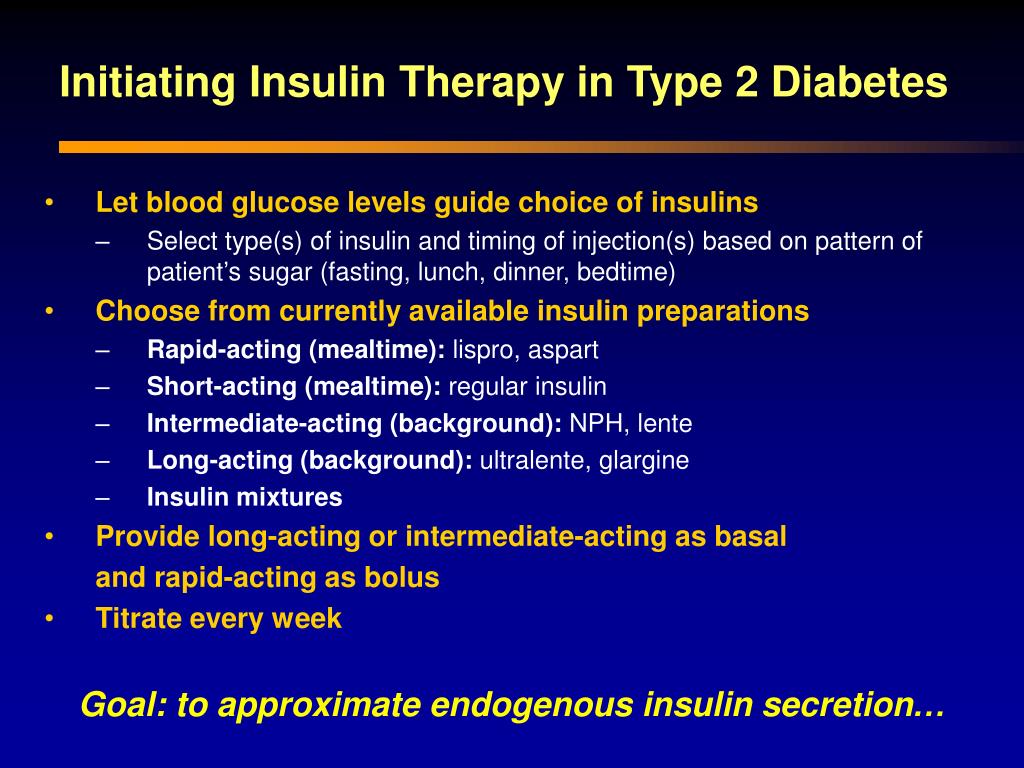
Long-Term Complications of Diabetes: Prevention and Management
While acute diabetic reactions are immediate concerns, long-term complications of diabetes can have significant impacts on health and quality of life. What are some of the potential long-term complications of diabetes?
- Cardiovascular disease
- Kidney disease (nephropathy)
- Eye damage (retinopathy)
- Nerve damage (neuropathy)
- Foot problems
- Skin conditions
- Hearing impairment
How can these complications be prevented or managed? Consistent blood sugar control is the cornerstone of prevention. Regular medical check-ups, including eye exams, foot exams, and kidney function tests, are crucial for early detection and management of complications. Additionally, maintaining a healthy lifestyle, including a balanced diet, regular exercise, and avoiding smoking, can significantly reduce the risk of long-term complications.
Diabetes and Mental Health: An Important Connection
The relationship between diabetes and mental health is bidirectional and complex. Why is mental health a crucial consideration in diabetes care? Living with a chronic condition like diabetes can increase the risk of depression, anxiety, and diabetes distress. Conversely, mental health issues can make diabetes management more challenging.
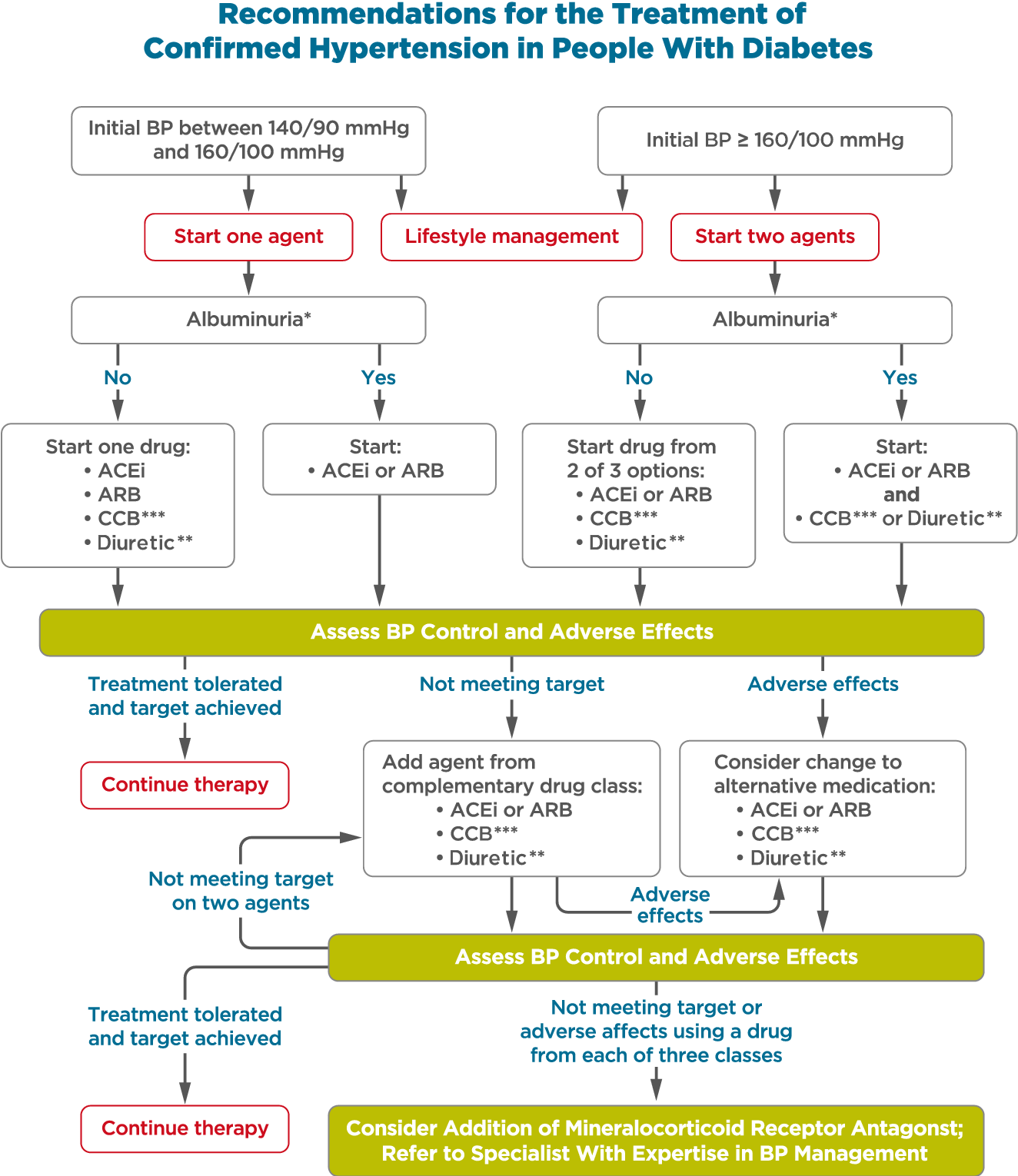
What strategies can help address the mental health aspects of diabetes?
- Regular mental health screenings as part of diabetes care
- Cognitive-behavioral therapy for diabetes-related stress
- Mindfulness practices for stress reduction
- Support groups focused on the emotional aspects of diabetes
- Collaboration between mental health professionals and diabetes care teams
Addressing mental health concerns alongside physical health can lead to better overall diabetes management and improved quality of life.
Nutrition Strategies for Optimal Diabetes Management
Proper nutrition plays a vital role in managing diabetes and preventing complications. What are some key dietary strategies for people with diabetes?
- Monitoring carbohydrate intake
- Choosing complex carbohydrates over simple sugars
- Incorporating lean proteins and healthy fats
- Increasing fiber intake
- Limiting saturated and trans fats
- Practicing portion control
- Staying hydrated
Why is working with a registered dietitian beneficial for diabetes management? A dietitian can provide personalized meal plans, teach carbohydrate counting techniques, and help individuals make sustainable dietary changes that align with their lifestyle and preferences.
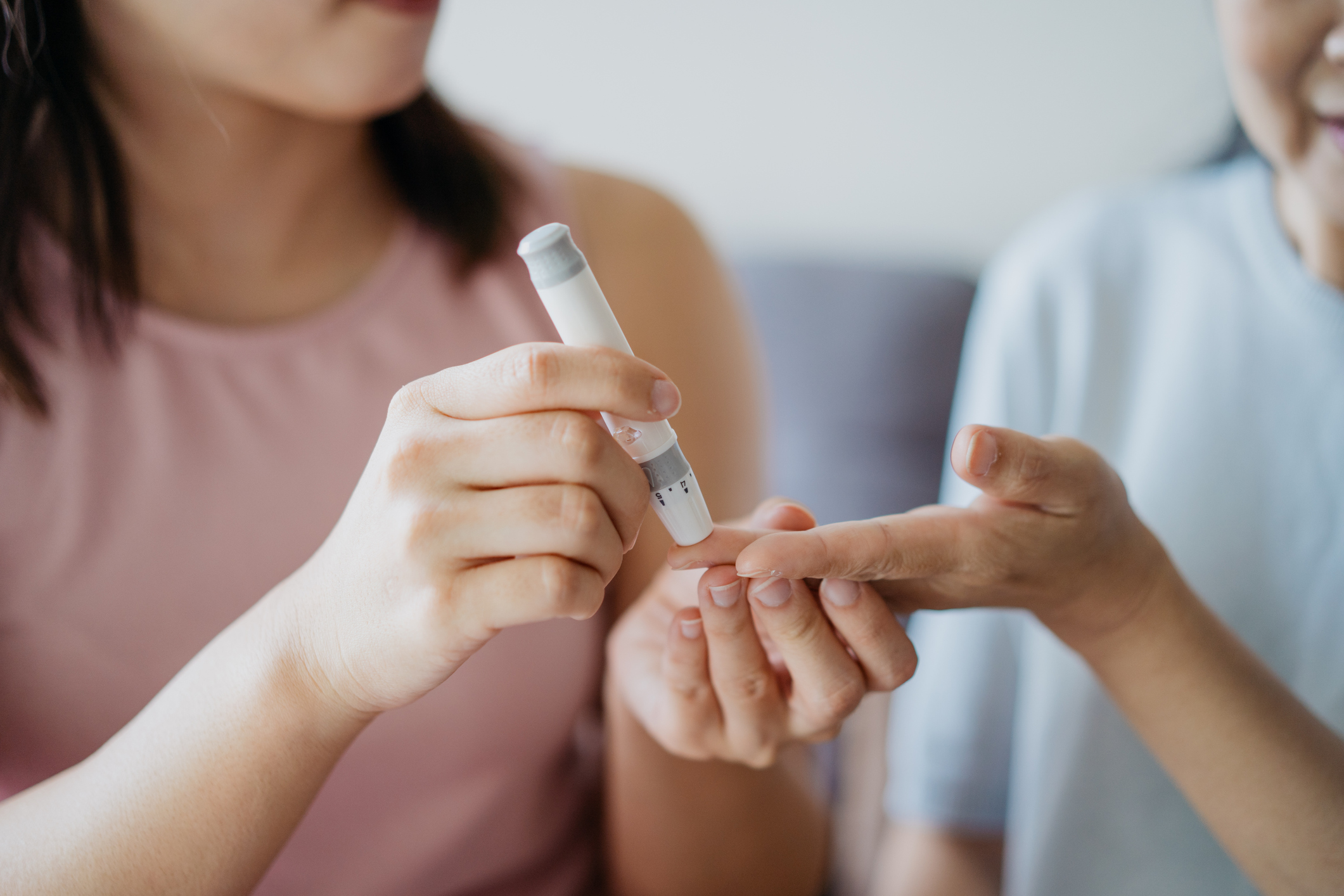
Exercise and Diabetes: Finding the Right Balance
Regular physical activity is a crucial component of diabetes management. How does exercise benefit people with diabetes?
- Improves insulin sensitivity
- Helps lower blood sugar levels
- Aids in weight management
- Reduces cardiovascular disease risk
- Improves mood and reduces stress
What considerations should diabetics keep in mind when exercising? It’s important to monitor blood sugar before, during, and after exercise, as physical activity can cause blood sugar fluctuations. Adjusting medication or carbohydrate intake may be necessary to prevent hypoglycemia during or after exercise. Working with a healthcare provider to develop a safe and effective exercise plan is recommended.
By understanding the nuances of diabetic reactions, implementing proactive management strategies, and addressing both the physical and emotional aspects of diabetes care, individuals can significantly reduce their risk of emergencies and improve their overall health outcomes. Regular communication with healthcare providers, ongoing diabetes education, and utilization of modern management tools are key components of effective long-term diabetes care.

Warning signs and what to do
We include products we think are useful for our readers. If you buy through links on this page, we may earn a small commission Here’s our process.
Medical News Today only shows you brands and products that we stand behind.
Our team thoroughly researches and evaluates the recommendations we make on our site. To establish that the product manufacturers addressed safety and efficacy standards, we:
- Evaluate ingredients and composition: Do they have the potential to cause harm?
- Fact-check all health claims: Do they align with the current body of scientific evidence?
- Assess the brand: Does it operate with integrity and adhere to industry best practices?
We do the research so you can find trusted products for your health and wellness.
Read more about our vetting process.
Was this helpful?
Diabetes symptoms can sometimes turn into an emergency quite quickly and suddenly. It is crucial to know the signs and symptoms of an emergency and what to do if one arises.
It is crucial to know the signs and symptoms of an emergency and what to do if one arises.
According to the Centers for Disease Control and Prevention (CDC), around 12.6 percent of the population in the United States have diabetes, with or without a diagnosis.
In the past, diabetes was often fatal, but recent progress in science and medication mean that most people with diabetes can now enjoy a normal lifespan.
However, the CDC state that diabetes, or complications related to it, is still the seventh most frequent form of death in the U.S., and it was responsible for nearly 25 deaths in every 100,000 in 2016.
Hypoglycemia (low blood sugar), hyperglycemia (high blood sugar), diabetic ketoacidosis (DKA), greater susceptibility to infections, and a range of complications all increase the risk.
Knowing the signs and being able to respond promptly may save lives. Read on to find out how and why diabetes can become dangerous, and what to do about it.
Any sudden, unexplained symptom warrants a call to the doctor.
Share on PinterestA headache can signal hypoglycemia. Without attention, this can lead to an emergency.
Both type 1 and type 2 diabetes prevent the body from managing blood sugar levels effectively.
In type 1 diabetes, the immune system destroys the cells that produce insulin. Type 2 diabetes reduces the body’s ability to respond to insulin. Consequently, the body does not produce enough insulin to manage the glucose in the body.
Most diabetic emergencies relate to disruptions in a person’s blood sugar levels, but complications relating to diabetes can also lead to problems.
Here are some of the most common emergencies that can arise, their warning signs, and what to do.
Hypoglycemia happens when blood sugar levels are too low, usually below 70 milligrams per deciliter (mg/dl).
Without treatment, such low levels of blood sugar can lead to seizures and become life-threatening. It is a medical emergency. However, it is easy to put right in the short-term as long as a person recognizes the signs.
Hypoglycemia can occur for many reasons, but, in diabetes, it usually stems from the use of insulin or other medications that control blood sugar.
Blood sugar levels may drop dangerously low when a person:
- takes more insulin than they need for their current food intake or exercise levels
- consumes too much alcohol
- misses or delays meals
- does more exercise than they expected to do
Early warning signs
The warning signs of hypoglycemia include:
- confusion, dizziness, and nausea
- feeling hungry
- feeling shaky, nervous, irritable or anxious
- sweating, chills, and pale, clammy skin
- rapid heartbeat
- weakness and tiredness
- tingling in the mouth area
- headaches
- seizures
- coma or loss of consciousness
- weight loss if hypoglycemia persists
If a person tests their blood sugar levels when they experience these symptoms, they may find that they are below 70 mg/dl.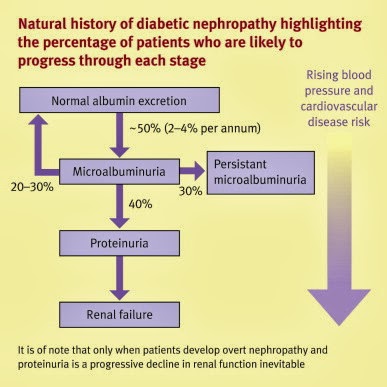
Action to take
If the symptoms appear suddenly, the person should take a high-carb snack to resolve them, such as:
- a glucose tablet
- a sweet juice
- a candy
- a sugar lump
The American Diabetes Association (ADA) recommend the following action:
- Take 15 grams (g) of carbohydrate and wait 15 minutes before testing blood sugar levels.
- If levels are still below 70 mg/dl, take another 15 g of carbs, wait, and test again.
- When glucose levels are above 70 mg/dl, eat a meal.
- If symptoms persist, seek medical help for any underlying condition.
If the person is conscious but unable to eat, someone who is with them should put a little honey or other sweet syrup inside their cheek and monitor their condition.
If they lose consciousness, any bystander should call 911 and ask for emergency medical help.
If a person experience regular hypoglycemia despite following the treatment plan, or if changes in blood sugar level occur suddenly in response to a medication change, they should see a doctor.
Hyperglycemia is when blood sugar levels are too high because insulin is not present or the body is not responding to the insulin that is present.
It can happen if a person with diabetes does not receive treatment.
Early warning signs
The person may notice:
- increased thirst
- the need to urinate more frequently
- headaches
- blurry vision
- fatigue
Tests will show high levels of sugar in the blood and urine.
Action to take
In mild cases, ways of resolving this include:
- exercising more
- eating less
- changing the dose of insulin or other medication
However, very high blood sugar levels can lead to life-threatening complications, such as diabetic ketoacidosis or hyperglycemic hyperosmolar syndrome.
If symptoms worsen or if a person experiences difficulty breathing or has a very dry mouth or a fruity smell on their breath, they should see a doctor as soon as possible.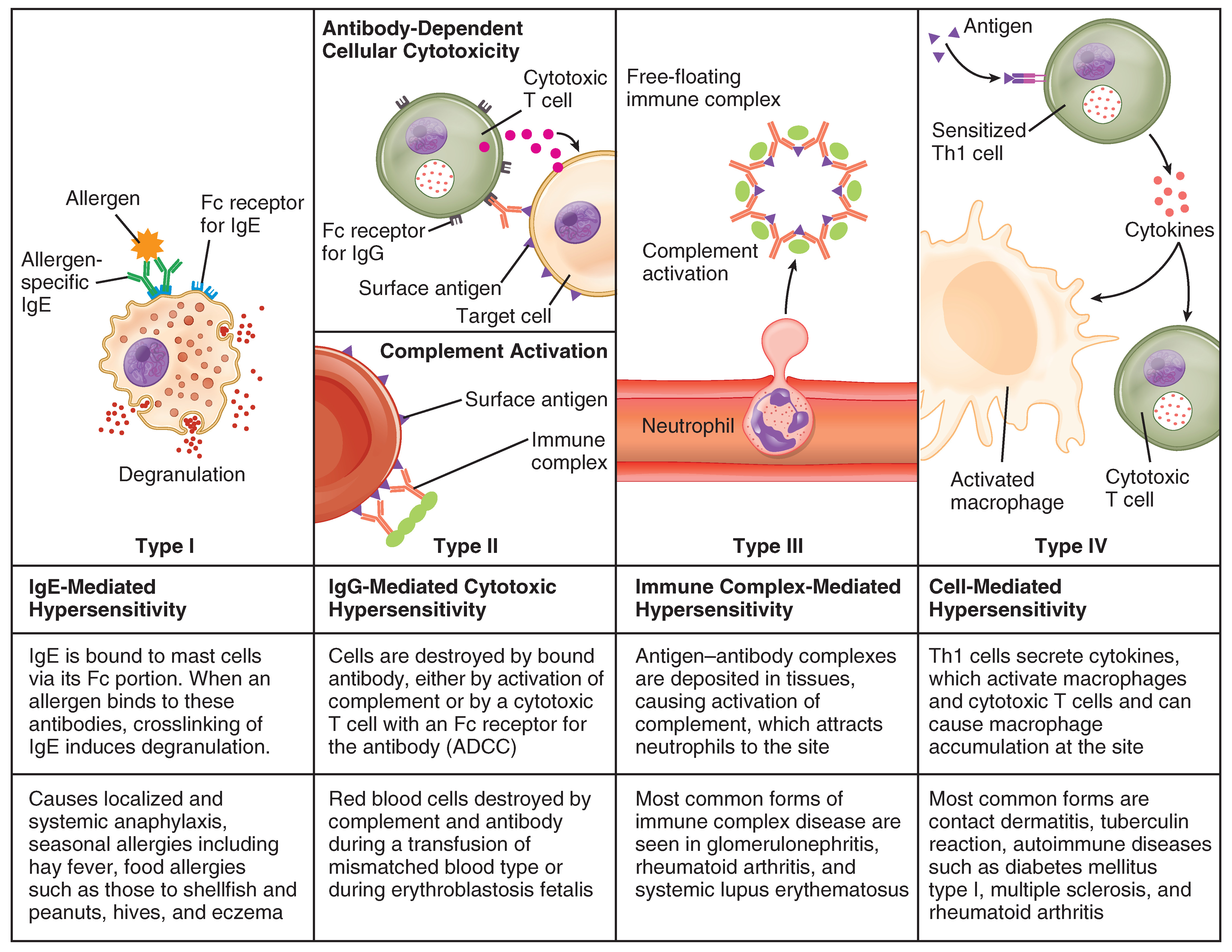
Click here to find out more about hyperglycemia.
Share on PinterestIncreased thirst may be a sign of high blood sugar or DKA.
Diabetic ketoacidosis (DKA) occurs when the body does not have enough insulin to allow glucose to enter the cells properly.
The cells do not have enough glucose to use for energy, so, instead, the body breaks down fat for fuel.
When this happens, the body produces substances known as ketones. High levels of ketones are toxic because they can raise the acidity levels of the blood.
Reasons why DKA might happen include:
- low insulin levels, due to not taking insulin or because another factor stops the insulin from working correctly
- not eating enough
- having an insulin reaction
People with both type 1 and type 2 diabetes can develop DKA.
Warning signs
The warning signs include:
- feeling thirsty or having a dry mouth
- frequent urination
- fatigue
- dry or flushed skin
- nausea, vomiting, or abdominal pain
- difficulty focusing
- confusion
- difficulty breathing
- a fruity smell on the breath
Action to take
If a ketone test shows that ketones are present and a blood glucose test shows that a person’s blood sugar levels are 240 m/dl or above, the ADA advise them to see a doctor.
Anyone with these symptoms should seek medical help as soon as possible, as DKA can become a medical emergency.
People can buy testing kits for ketones and blood sugar levels online.
According to the American Academy of Family Physicians (AAFP), hyperglycemic hyperosmolar syndrome (HHS) occurs when blood sugar levels become dangerously high, usually above 600 mg/dl.
This may happen with or without DKA, and it can be life-threatening.
People with poorly controlled type 2 diabetes are more prone to HHS, but people without diabetes — or a without diagnosis of diabetes — might experience it.
According to the AAFP, the following factors may increase the risk:
- infections, including pneumonia, a urinary tract infection, and sepsis
- the use of some medications, including some psychiatric treatments and diuretics, which can lead to dehydration
- not following treatment for diabetes
- having undiagnosed diabetes
- misuse of some substances
- having another health condition, such as a heart attack, a stroke, or a pulmonary embolism (lung clot)
Some of these can also occur with diabetes and may be a complication of diabetes.
Early warning signs
Symptoms include:
- a dry mouth
- a weak and rapid pulse
- a low-grade fever (in adults)
- a headache, nausea, and vomiting (in children)
- seizures
- a loss of consciousness
- temporary partial paralysis
Blood tests may show that the person’s blood glucose level is above 600 mg/dl.
Action to take
If a person has these symptoms, they or someone else should seek medical help at once.
The person will require treatment in the hospital, which will include rehydration, the use of insulin, and any necessary treatment for an underlying cause.
Researchers note that the processes that occur with diabetes can also affect the immune system.
As a result, a person with diabetes will have a higher chance of developing an infection. When a person has diabetes, any symptoms and complications of an infection may be more severe and possibly life-threatening.
Common infections that can occur with diabetes include:
- skin infections that can lead to ulceration
- urinary tract infections, which may spread to the kidneys
- ear infections
- respiratory infections, including pneumonia and influenza
- gastrointestinal and liver infections
- gum disease
Minor infections can spread to deeper tissue, possibly leading to sepsis and other potentially life-threatening complications.
Factors that increase the risk include:
- a recent injury or illness
- an open wound
- exposure to pathogens, such as viruses, fungus, or bacteria
People with poorly controlled diabetes and those with other complications should take care to:
- avoid infections where possible, for example, by having any vaccinations that the doctor recommends
- checking the skin, and especially the feet, for wounds
- getting early treatment for any wound or possible infection
Warning signs and action
If a person experiences a fever, pain, and swelling in any part of their body, they should seek medical advice.
An infection can become rapidly become serious when a person has diabetes.
Share on PinterestPeople with diabetes have a higher risk of heart attack and stroke than others.
Diabetes can harm almost every system in the body and increase the risk of many other diseases.
People with diabetes can experience a range of problems, including:
- cardiovascular disease, which may lead to a heart attack or a stroke
- poor circulation that leads to ulcers in the legs
- vision loss
- kidney failure
- obesity
Poorly controlled diabetes, a history of infections, and having other health conditions all increase the risk of these complications.
A diabetic emergency happens when symptoms relating to diabetes overwhelm the body.
At this point, home treatment is unlikely to help, and delaying medical care could cause permanent damage or death.
Some of the signs that can indicate a serious problem include:
- chest pain that radiates down the arm
- difficulty breathing
- a fever
- a severe headache and weakness in one side of the body
- seizures
- loss of consciousness
If there are signs of an emergency, the person should go to the emergency room, or they or someone with them should call 911 immediately.
Without rapid help, some diabetic emergencies can be life-threatening.
It is not always possible to prevent an emergency, but being able to recognize the signs can improve the chances of early treatment and a full recovery.
Strategies that can help to reduce the risk of an emergency include:
Following the treatment plan: Use medications as a doctor prescribes and keep in touch with the healthcare team. If a person cannot remember whether or not they took their last dose of drugs, they should ask a doctor before taking a further dose. This can help to prevent hypoglycemia. Anyone who notices a change in their symptoms should see a doctor.
If a person cannot remember whether or not they took their last dose of drugs, they should ask a doctor before taking a further dose. This can help to prevent hypoglycemia. Anyone who notices a change in their symptoms should see a doctor.
Eating healthful, balanced, regular meals: People who use insulin or other medications that lower blood glucose should ask their doctor about what foods to eat, how much, and when, in order to maintain stable blood sugar levels. Small, frequent meals are better than fewer larger meals.
Limiting alcohol and sugary drinks: These drinks contain carbs, which can raise blood sugar and contribute to obesity. Alcohol consumption can also increase the risk of other health conditions.
Treating infections early: Diabetes can compromise the immune system and the body’s organs, making it easier for infections to develop. Prompt treatment can prevent minor problems from becoming more serious.
Exercising regularly: Exercise helps the body control blood sugar. It can also help with symptoms that often accompany diabetes, such as high blood pressure, obesity, and poor circulation.
It can also help with symptoms that often accompany diabetes, such as high blood pressure, obesity, and poor circulation.
No specific medication or procedure can stop a diabetic emergency once it occurs, but emergency planning can increase the chances of getting prompt help.
People with diabetes should:
- let their friends know they have diabetes
- wear a medical ID so that people will know what to do in an emergency
- keep a mobile phone charged and ready to contact emergency responders
- know who to call with questions about diabetes emergencies
Diabetes is a serious and complex condition, and an emergency can arise for various reasons.
Managing the condition through medication and a healthful lifestyle, ensuring that others know the person has diabetes, and learning as much as possible about diabetes and its complications can reduce the risk of an emergency arising.
Warning signs and what to do
We include products we think are useful for our readers.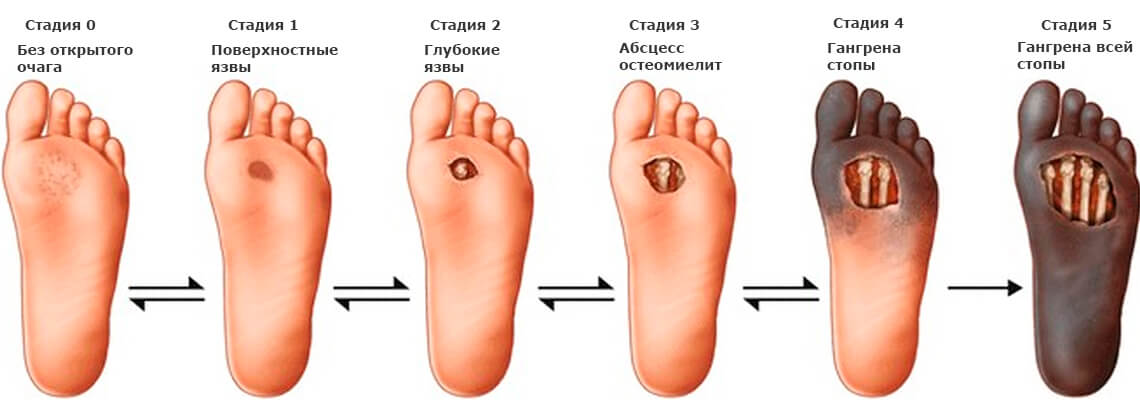 If you buy through links on this page, we may earn a small commission Here’s our process.
If you buy through links on this page, we may earn a small commission Here’s our process.
Medical News Today only shows you brands and products that we stand behind.
Our team thoroughly researches and evaluates the recommendations we make on our site. To establish that the product manufacturers addressed safety and efficacy standards, we:
- Evaluate ingredients and composition: Do they have the potential to cause harm?
- Fact-check all health claims: Do they align with the current body of scientific evidence?
- Assess the brand: Does it operate with integrity and adhere to industry best practices?
We do the research so you can find trusted products for your health and wellness.
Read more about our vetting process.
Was this helpful?
Diabetes symptoms can sometimes turn into an emergency quite quickly and suddenly. It is crucial to know the signs and symptoms of an emergency and what to do if one arises.
According to the Centers for Disease Control and Prevention (CDC), around 12.6 percent of the population in the United States have diabetes, with or without a diagnosis.
In the past, diabetes was often fatal, but recent progress in science and medication mean that most people with diabetes can now enjoy a normal lifespan.
However, the CDC state that diabetes, or complications related to it, is still the seventh most frequent form of death in the U.S., and it was responsible for nearly 25 deaths in every 100,000 in 2016.
Hypoglycemia (low blood sugar), hyperglycemia (high blood sugar), diabetic ketoacidosis (DKA), greater susceptibility to infections, and a range of complications all increase the risk.
Knowing the signs and being able to respond promptly may save lives. Read on to find out how and why diabetes can become dangerous, and what to do about it.
Any sudden, unexplained symptom warrants a call to the doctor.
Share on PinterestA headache can signal hypoglycemia.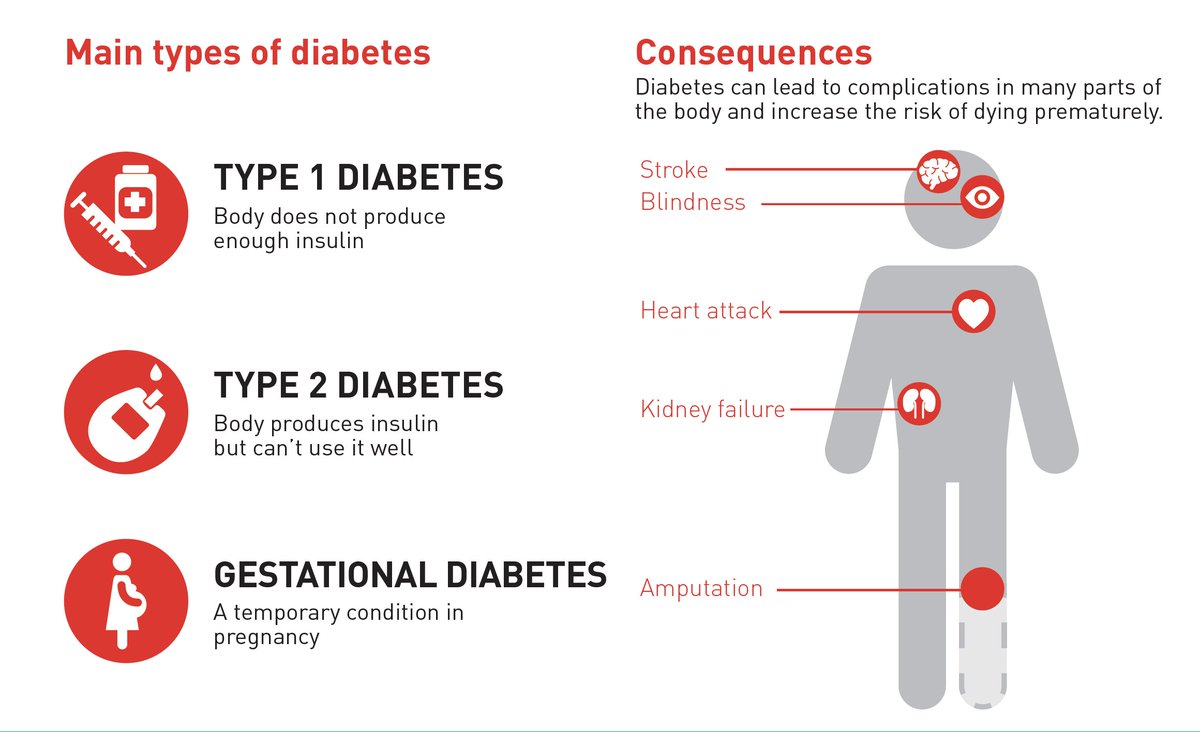 Without attention, this can lead to an emergency.
Without attention, this can lead to an emergency.
Both type 1 and type 2 diabetes prevent the body from managing blood sugar levels effectively.
In type 1 diabetes, the immune system destroys the cells that produce insulin. Type 2 diabetes reduces the body’s ability to respond to insulin. Consequently, the body does not produce enough insulin to manage the glucose in the body.
Most diabetic emergencies relate to disruptions in a person’s blood sugar levels, but complications relating to diabetes can also lead to problems.
Here are some of the most common emergencies that can arise, their warning signs, and what to do.
Hypoglycemia happens when blood sugar levels are too low, usually below 70 milligrams per deciliter (mg/dl).
Without treatment, such low levels of blood sugar can lead to seizures and become life-threatening. It is a medical emergency. However, it is easy to put right in the short-term as long as a person recognizes the signs.
Hypoglycemia can occur for many reasons, but, in diabetes, it usually stems from the use of insulin or other medications that control blood sugar.
Blood sugar levels may drop dangerously low when a person:
- takes more insulin than they need for their current food intake or exercise levels
- consumes too much alcohol
- misses or delays meals
- does more exercise than they expected to do
Early warning signs
The warning signs of hypoglycemia include:
- confusion, dizziness, and nausea
- feeling hungry
- feeling shaky, nervous, irritable or anxious
- sweating, chills, and pale, clammy skin
- rapid heartbeat
- weakness and tiredness
- tingling in the mouth area
- headaches
- seizures
- coma or loss of consciousness
- weight loss if hypoglycemia persists
If a person tests their blood sugar levels when they experience these symptoms, they may find that they are below 70 mg/dl.
Action to take
If the symptoms appear suddenly, the person should take a high-carb snack to resolve them, such as:
- a glucose tablet
- a sweet juice
- a candy
- a sugar lump
The American Diabetes Association (ADA) recommend the following action:
- Take 15 grams (g) of carbohydrate and wait 15 minutes before testing blood sugar levels.

- If levels are still below 70 mg/dl, take another 15 g of carbs, wait, and test again.
- When glucose levels are above 70 mg/dl, eat a meal.
- If symptoms persist, seek medical help for any underlying condition.
If the person is conscious but unable to eat, someone who is with them should put a little honey or other sweet syrup inside their cheek and monitor their condition.
If they lose consciousness, any bystander should call 911 and ask for emergency medical help.
If a person experience regular hypoglycemia despite following the treatment plan, or if changes in blood sugar level occur suddenly in response to a medication change, they should see a doctor.
Hyperglycemia is when blood sugar levels are too high because insulin is not present or the body is not responding to the insulin that is present.
It can happen if a person with diabetes does not receive treatment.
Early warning signs
The person may notice:
- increased thirst
- the need to urinate more frequently
- headaches
- blurry vision
- fatigue
Tests will show high levels of sugar in the blood and urine.
Action to take
In mild cases, ways of resolving this include:
- exercising more
- eating less
- changing the dose of insulin or other medication
However, very high blood sugar levels can lead to life-threatening complications, such as diabetic ketoacidosis or hyperglycemic hyperosmolar syndrome.
If symptoms worsen or if a person experiences difficulty breathing or has a very dry mouth or a fruity smell on their breath, they should see a doctor as soon as possible.
Click here to find out more about hyperglycemia.
Share on PinterestIncreased thirst may be a sign of high blood sugar or DKA.
Diabetic ketoacidosis (DKA) occurs when the body does not have enough insulin to allow glucose to enter the cells properly.
The cells do not have enough glucose to use for energy, so, instead, the body breaks down fat for fuel.
When this happens, the body produces substances known as ketones. High levels of ketones are toxic because they can raise the acidity levels of the blood.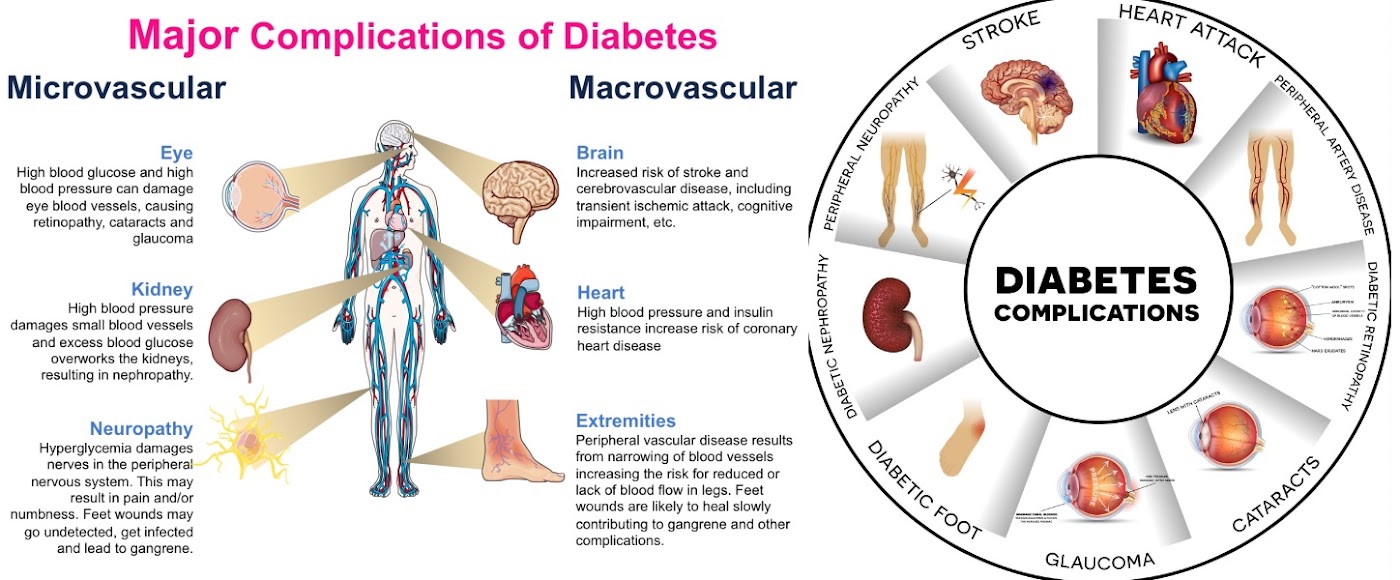
Reasons why DKA might happen include:
- low insulin levels, due to not taking insulin or because another factor stops the insulin from working correctly
- not eating enough
- having an insulin reaction
People with both type 1 and type 2 diabetes can develop DKA.
Warning signs
The warning signs include:
- feeling thirsty or having a dry mouth
- frequent urination
- fatigue
- dry or flushed skin
- nausea, vomiting, or abdominal pain
- difficulty focusing
- confusion
- difficulty breathing
- a fruity smell on the breath
Action to take
If a ketone test shows that ketones are present and a blood glucose test shows that a person’s blood sugar levels are 240 m/dl or above, the ADA advise them to see a doctor.
Anyone with these symptoms should seek medical help as soon as possible, as DKA can become a medical emergency.
People can buy testing kits for ketones and blood sugar levels online.
According to the American Academy of Family Physicians (AAFP), hyperglycemic hyperosmolar syndrome (HHS) occurs when blood sugar levels become dangerously high, usually above 600 mg/dl.
This may happen with or without DKA, and it can be life-threatening.
People with poorly controlled type 2 diabetes are more prone to HHS, but people without diabetes — or a without diagnosis of diabetes — might experience it.
According to the AAFP, the following factors may increase the risk:
- infections, including pneumonia, a urinary tract infection, and sepsis
- the use of some medications, including some psychiatric treatments and diuretics, which can lead to dehydration
- not following treatment for diabetes
- having undiagnosed diabetes
- misuse of some substances
- having another health condition, such as a heart attack, a stroke, or a pulmonary embolism (lung clot)
Some of these can also occur with diabetes and may be a complication of diabetes.
Early warning signs
Symptoms include:
- a dry mouth
- a weak and rapid pulse
- a low-grade fever (in adults)
- a headache, nausea, and vomiting (in children)
- seizures
- a loss of consciousness
- temporary partial paralysis
Blood tests may show that the person’s blood glucose level is above 600 mg/dl.
Action to take
If a person has these symptoms, they or someone else should seek medical help at once.
The person will require treatment in the hospital, which will include rehydration, the use of insulin, and any necessary treatment for an underlying cause.
Researchers note that the processes that occur with diabetes can also affect the immune system.
As a result, a person with diabetes will have a higher chance of developing an infection. When a person has diabetes, any symptoms and complications of an infection may be more severe and possibly life-threatening.
Common infections that can occur with diabetes include:
- skin infections that can lead to ulceration
- urinary tract infections, which may spread to the kidneys
- ear infections
- respiratory infections, including pneumonia and influenza
- gastrointestinal and liver infections
- gum disease
Minor infections can spread to deeper tissue, possibly leading to sepsis and other potentially life-threatening complications.
Factors that increase the risk include:
- a recent injury or illness
- an open wound
- exposure to pathogens, such as viruses, fungus, or bacteria
People with poorly controlled diabetes and those with other complications should take care to:
- avoid infections where possible, for example, by having any vaccinations that the doctor recommends
- checking the skin, and especially the feet, for wounds
- getting early treatment for any wound or possible infection
Warning signs and action
If a person experiences a fever, pain, and swelling in any part of their body, they should seek medical advice.
An infection can become rapidly become serious when a person has diabetes.
Share on PinterestPeople with diabetes have a higher risk of heart attack and stroke than others.
Diabetes can harm almost every system in the body and increase the risk of many other diseases.
People with diabetes can experience a range of problems, including:
- cardiovascular disease, which may lead to a heart attack or a stroke
- poor circulation that leads to ulcers in the legs
- vision loss
- kidney failure
- obesity
Poorly controlled diabetes, a history of infections, and having other health conditions all increase the risk of these complications.
A diabetic emergency happens when symptoms relating to diabetes overwhelm the body.
At this point, home treatment is unlikely to help, and delaying medical care could cause permanent damage or death.
Some of the signs that can indicate a serious problem include:
- chest pain that radiates down the arm
- difficulty breathing
- a fever
- a severe headache and weakness in one side of the body
- seizures
- loss of consciousness
If there are signs of an emergency, the person should go to the emergency room, or they or someone with them should call 911 immediately.
Without rapid help, some diabetic emergencies can be life-threatening.
It is not always possible to prevent an emergency, but being able to recognize the signs can improve the chances of early treatment and a full recovery.
Strategies that can help to reduce the risk of an emergency include:
Following the treatment plan: Use medications as a doctor prescribes and keep in touch with the healthcare team.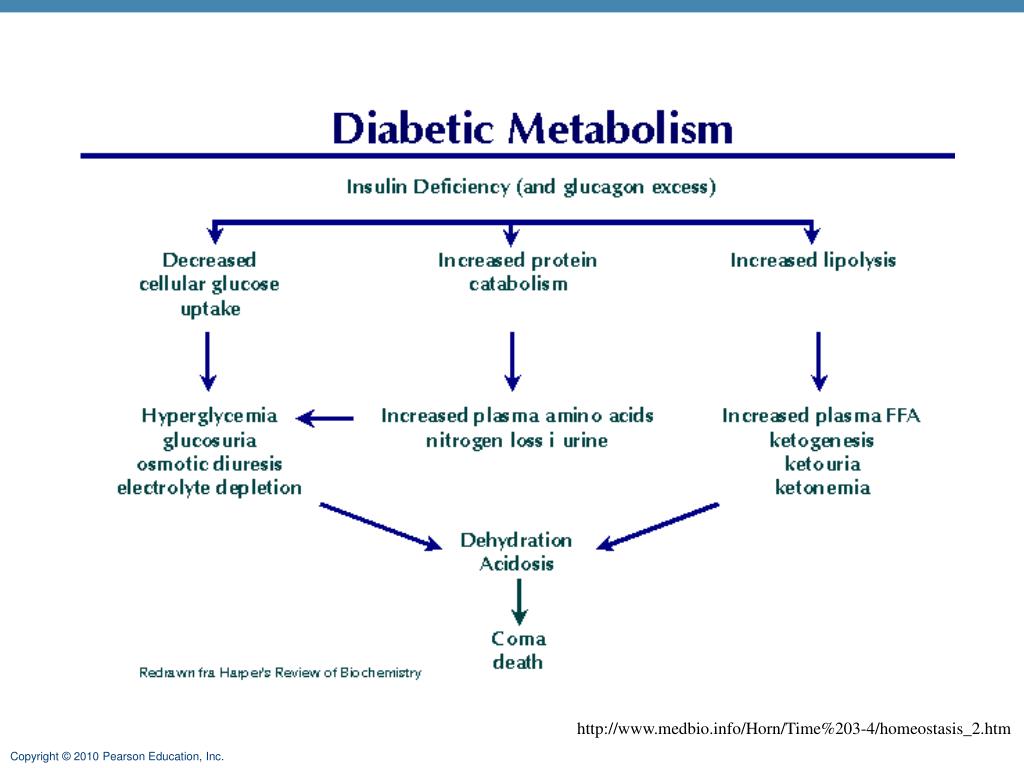 If a person cannot remember whether or not they took their last dose of drugs, they should ask a doctor before taking a further dose. This can help to prevent hypoglycemia. Anyone who notices a change in their symptoms should see a doctor.
If a person cannot remember whether or not they took their last dose of drugs, they should ask a doctor before taking a further dose. This can help to prevent hypoglycemia. Anyone who notices a change in their symptoms should see a doctor.
Eating healthful, balanced, regular meals: People who use insulin or other medications that lower blood glucose should ask their doctor about what foods to eat, how much, and when, in order to maintain stable blood sugar levels. Small, frequent meals are better than fewer larger meals.
Limiting alcohol and sugary drinks: These drinks contain carbs, which can raise blood sugar and contribute to obesity. Alcohol consumption can also increase the risk of other health conditions.
Treating infections early: Diabetes can compromise the immune system and the body’s organs, making it easier for infections to develop. Prompt treatment can prevent minor problems from becoming more serious.
Exercising regularly: Exercise helps the body control blood sugar. It can also help with symptoms that often accompany diabetes, such as high blood pressure, obesity, and poor circulation.
It can also help with symptoms that often accompany diabetes, such as high blood pressure, obesity, and poor circulation.
No specific medication or procedure can stop a diabetic emergency once it occurs, but emergency planning can increase the chances of getting prompt help.
People with diabetes should:
- let their friends know they have diabetes
- wear a medical ID so that people will know what to do in an emergency
- keep a mobile phone charged and ready to contact emergency responders
- know who to call with questions about diabetes emergencies
Diabetes is a serious and complex condition, and an emergency can arise for various reasons.
Managing the condition through medication and a healthful lifestyle, ensuring that others know the person has diabetes, and learning as much as possible about diabetes and its complications can reduce the risk of an emergency arising.
School of Diabetes – Diabetic Polyneuropathy: Symptoms, Types, Treatment
Diabetic polyneuropathy (DPN) is a lesion of the peripheral nervous system, one of the most frequently detected complications of diabetes mellitus (DM). In 10% of people living with diabetes, symptoms of neuropathy are already present at the time of diagnosis of type 2 diabetes, and after 5-10 years, the number of such cases increases to 50%. This is due to the long asymptomatic period of the disease, when 5-7 years have passed since the onset of carbohydrate metabolism disorders. All this time, a person is in a state of chronically elevated blood glucose levels [1]. From the article you will learn the mechanism of development of diabetic neuropathy, its signs, diagnostic methods and approaches to prevention and treatment.
In 10% of people living with diabetes, symptoms of neuropathy are already present at the time of diagnosis of type 2 diabetes, and after 5-10 years, the number of such cases increases to 50%. This is due to the long asymptomatic period of the disease, when 5-7 years have passed since the onset of carbohydrate metabolism disorders. All this time, a person is in a state of chronically elevated blood glucose levels [1]. From the article you will learn the mechanism of development of diabetic neuropathy, its signs, diagnostic methods and approaches to prevention and treatment.
Pathogenesis
The key role in damage to organs and tissues is played by the duration and severity of carbohydrate metabolism disorders. The development of any complications in diabetes mellitus is associated with an increased level of glucose in the blood (hyperglycemia). Excess glucose interacts with fats, proteins and body fluids of the human body and changes their chemical structure. In DM and prolonged hyperglycemia, a chemical reaction (glycation) also occurs with the structural proteins of nerve fibers [2].
In DM and prolonged hyperglycemia, a chemical reaction (glycation) also occurs with the structural proteins of nerve fibers [2].
As a result, the end products of protein glycation are formed, which are proven to disrupt the metabolism of nerve cells, change the transport in their long processes (axons), the conduction of a nerve impulse, the ability to regenerate, and stimulate the synthesis of pro-inflammatory substances (cytokines) [3]. Intermediate products of glucose metabolism are toxic, their accumulation in neurons and vascular cells leads to pathological changes in nerves and blood vessels [4]. Diabetic microvascular lesions are characterized by microthrombosis and blockage of the capillary bed, leading to impaired blood supply and subsequent degeneration of nerve fibers [3].
Autoimmune processes are activated, systemic inflammation and oxidative stress increase, antibodies are formed to the vagus nerve, sympathetic nerve nodes, and the adrenal medulla. The progressive death of neurons is often irreversible due to impaired recovery processes in diabetes mellitus. The development of DPN occurs in parallel with the damage to the microvascular bed and the development of nephropathy [2].
The progressive death of neurons is often irreversible due to impaired recovery processes in diabetes mellitus. The development of DPN occurs in parallel with the damage to the microvascular bed and the development of nephropathy [2].
Symptoms
The most common form of the disease is chronic sensorimotor neuropathy [5]. Polyneuropathy of the lower extremities begins at the end of the legs and spreads towards the trunk [2]. Thin sensory fibers are the first to suffer. This is manifested by pain, unpleasant sensations of burning and tingling, numbness. Symptoms of DPN, especially neuropathic pain, can appear suddenly and be quite pronounced, which can reduce the quality of life of patients, create difficulties for movement, cause bad mood and social maladjustment [2].
Along with this, there is a violation of reflexes and a decrease in surface (pain and temperature) and deep (vibration) sensitivity. Movement disorders (weakness and thinning of the muscles of the feet and legs) are noted in the later stages of the disease. Disorder of sensitivity in the hands and feet with DPN has the form of “gloves” and “stockings”. People with damage to thick myelin fibers have complaints of numbness, tingling, and pain. Unsteadiness of gait is common, especially in the dark or when walking on uneven surfaces. Individuals with this type of polyneuropathy are at high risk of developing ulcerative lesions, which can eventually lead to amputation.
Movement disorders (weakness and thinning of the muscles of the feet and legs) are noted in the later stages of the disease. Disorder of sensitivity in the hands and feet with DPN has the form of “gloves” and “stockings”. People with damage to thick myelin fibers have complaints of numbness, tingling, and pain. Unsteadiness of gait is common, especially in the dark or when walking on uneven surfaces. Individuals with this type of polyneuropathy are at high risk of developing ulcerative lesions, which can eventually lead to amputation.
In a minority of patients with DPN, thin myelin fibers are predominantly affected. Clinically, this is manifested by a decrease in temperature and pain sensitivity with a relatively intact vibrational and muscle feeling. Quite often, neuropathic pains develop, which are described by patients as burning, stinging, pulling, like “needles” [2].
Another form of the disease is autonomic polyneuropathy. It is manifested by disorders of the autonomic nervous system, occurs quite often and proceeds under various clinical masks [6]. Complaints vary depending on which organ system is affected [5]:
It is manifested by disorders of the autonomic nervous system, occurs quite often and proceeds under various clinical masks [6]. Complaints vary depending on which organ system is affected [5]:
- cardiovascular – dizziness, fainting;
- gastrointestinal – swallowing disorder, nausea, vomiting, constipation / diarrhea, bedwetting;
- genitourinary – the need to wake up several times at night to urinate, a feeling of incomplete emptying of the bladder, erectile dysfunction, vaginal dryness.
Also, autonomic polyneuropathy is characterized by a violation of sweating (absence or sweat during meals), a disorder in the adaptation of the pupil to light, and “silent” myocardial ischemia [5].
There is evidence that a patient with DPN, driving a vehicle, may pose a threat to himself and others. In people with neuropathy of the lower extremities, the inhibition response is slowed down, which increases the likelihood of an accident.
Disturbance of pupillary reactions is expressed in a paradoxical decrease in the diameter of the pupil during adaptation to darkness in the early stages and the absence or very slow and incomplete expansion of the pupil in the future. This feature is manifested by the difficulty of driving at night [2].
Diagnostics
Timely treatment of diabetic polyneuropathy improves the quality of life and prevents disability. Therefore, early diagnosis of the disease is very important.
Diagnostic methods include electroneuromyography – a comprehensive assessment of the electrical activity of nerve fibers and muscles. According to the results of the study, damage to the sensory and motor nerves in the terminal sections of the legs is revealed. Orthostatic testing or quantitative autonomic and sensory testing is useful for detecting thin fiber pathology.
For an objective assessment of peripheral nerve function, the TSS (general symptom score) and NISS-LL (lower extremity neuropathy score) scales are used. The TSS evaluates symptoms such as pain, burning, numbness, tingling, while the NISS-LL provides insight into foot muscle strength, Achilles reflex retention, and pain sensitivity. The scales are easy to use, the time of their filling does not exceed several minutes [4].
The TSS evaluates symptoms such as pain, burning, numbness, tingling, while the NISS-LL provides insight into foot muscle strength, Achilles reflex retention, and pain sensitivity. The scales are easy to use, the time of their filling does not exceed several minutes [4].
Treatment
For effective treatment of diabetic polyneuropathy, it is important to reduce weight, stop smoking, control blood pressure and blood lipids [2]. It is useful to adhere to a diet, maintain physical activity and engage in therapeutic exercises [4]. The main method of treating the disease is the achievement and long-term maintenance of optimal glycemic control [2].
Drug therapy for DPN is divided into pathogenetic and symptomatic.
Pathogenetic treatment is aimed at reducing neurological symptoms and improving nerve function. It includes the appointment of antioxidants, combined preparations of B vitamins and hemoderivat-based products.
Symptomatic therapy is aimed at eliminating the main manifestations of polyneuropathy, most often analgesics are prescribed to relieve neuropathic pain [1]. However, it should be borne in mind that, by reducing the intensity of pain, these drugs do not slow down the progression of DPN [4]:
- anticonvulsants;
- antidepressants;
- opioids.
An anxiety or depressive disorder is diagnosed in 2/3 of people with pain DPN, 95% have sleep disturbance, so these patients require psychological or psychotherapeutic help [4].
Forecast
A clear relationship has been established between chronic hyperglycemia and complications of diabetes mellitus. Preventing DPN in people with type 1 diabetes and slowing the progression of the disease in type 2 diabetes can be achieved with good glycemic control. However, the effect of restoring neuronal damage was not revealed [2]. Therefore, the sooner the glucose content reaches normal levels and the treatment of polyneuropathy is started, the better the long-term prognosis [4].
However, the effect of restoring neuronal damage was not revealed [2]. Therefore, the sooner the glucose content reaches normal levels and the treatment of polyneuropathy is started, the better the long-term prognosis [4].
Prophylaxis
At present, the main pathogenetically justified and clinically proven method for the prevention of diabetic polyneuropathy is the achievement and maintenance of optimal (glycosylated hemoglobin
Necrobiosis lipoidis and other skin lesions in diabetes mellitus | Smirnova
Skin changes are observed both at the onset of diabetes mellitus (DM) and during the development of its complications (nephropathy, neuropathy, hiropathy). They can be caused by: metabolic disorders, the addition of an infection, long-term use of animal insulins, and also be observed in various syndromes, including DM (Table 1).
One of the skin lesions that occurs with metabolic disorders is diabetic dermopathy . It begins with papular rashes on the anterior surface of the lower leg, which then turn into rounded, atrophic, reddish-brown spots up to 1 cm in diameter.
It begins with papular rashes on the anterior surface of the lower leg, which then turn into rounded, atrophic, reddish-brown spots up to 1 cm in diameter.
A manifestation of granuloma annulare (Fig. 1) are small multiple papules arranged in a ring or semiring. They may be reddish-pink or indistinguishable from the surrounding skin, measuring 1–5 cm in diameter.
Diabetic blisters (fig. 2) form spontaneously and are the result of trophic disorders due to autonomic peripheral polyneuropathy. Characterized by intraepidermal blisters on the toes, hands, less often on the skin of the lower extremities above the feet. Their development is provoked by the friction of shoes or clothing. Diabetic blisters can serve as entry gates for secondary infection.
Eruptive xanthomas (Fig. 3) are multiple reddish-yellow papules. They appear in patients with severe diabetes and severe hypertriglyceridemia. Unlike the xanthomas observed in familial hypercholesterolemia, they are surrounded by a pink or red border. Histologically, the accumulation of xanthoma cells (macrophages loaded with lipids) is determined. Eruptive xanthomas sometimes occur as a reaction to trauma (the Koebner phenomenon) and in this case are arranged linearly [1]. After eliminating dyslipoproteinemia, they disappear.
Histologically, the accumulation of xanthoma cells (macrophages loaded with lipids) is determined. Eruptive xanthomas sometimes occur as a reaction to trauma (the Koebner phenomenon) and in this case are arranged linearly [1]. After eliminating dyslipoproteinemia, they disappear.
Vitiligo (Fig. 4) is associated with a decrease in the number of epidermal melanocytes. Vitiligo is considered as an independent skin disease of an autoimmune nature. Quite often, vitiligo is combined with type 1 diabetes. Lesions are characterized by white spots with clear boundaries. Sometimes the edges of the spot are hyperpigmented and in rare cases – hyperemic. Most often, the perioral, periorbital and anogenital areas, elbows, knees, axillary and inguinal folds, and forearms are involved in the process. The process is symmetrical. Hair may become discolored (leukotrichia) [2].
At the sites of insulin injections, with a long course of diabetes, post-injection dystrophies may occur, which are divided into lipoatrophy and lipohyperatrophy.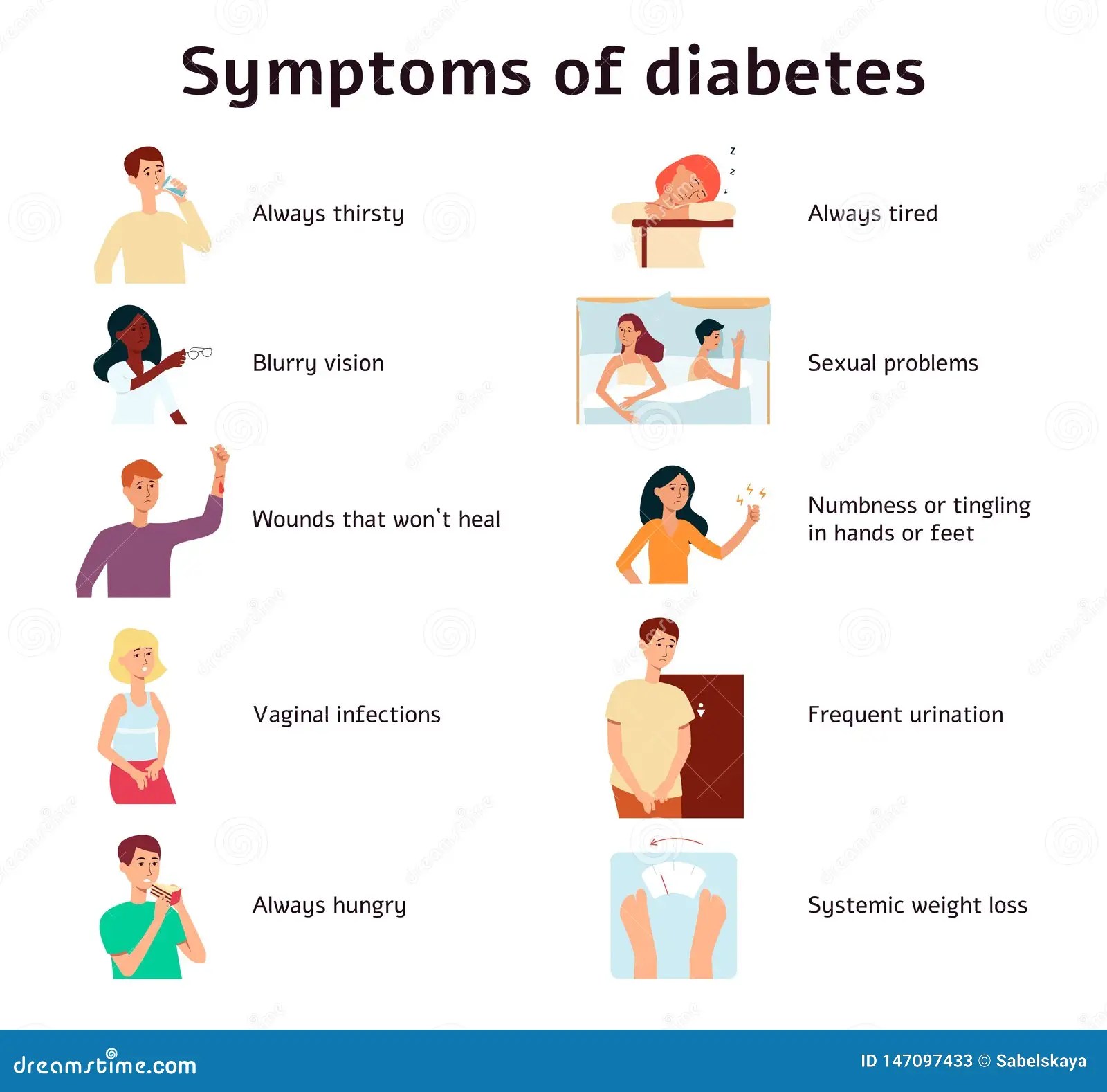
Lipoatrophy (minus tissue) is characterized by a decrease in the amount of subcutaneous adipose tissue, up to its complete disappearance. Causes of post-injection lipoatrophy: acidic pH of insulin preparations and local immune reactions to the components of the preparation [3]. Lipohyperatrophy may also occur at injection sites (plus-tissue), due to increased lipogenesis. With the use of human insulin preparations that do not contain phenol and cresol, the incidence of post-injection lipodystrophy has decreased dramatically.
Against the background of DM, the incidence of purulent-infectious skin diseases increases. Characterized by recurrent furunculosis, carbuncles, less often – an infection caused by opportunistic fungi.
Candidiasis usually caused by Candida albicans . Candidiasis of the skin and mucous membranes is characterized by red plaques with white exudate adhering to them and adjacent pustules. Vulvovaginal candidiasis is very common.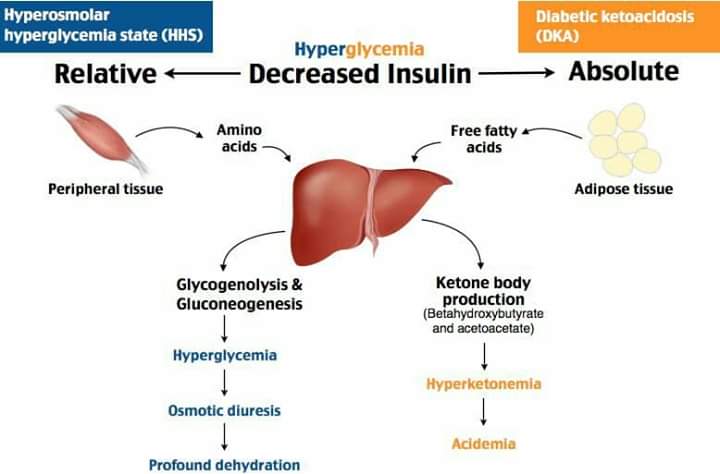 Perianal dermatitis occurs in both men and women. Other forms of skin and mucosal candidiasis include thrush (infection of the oral mucosa), congestion (angular cheilitis), intertrigo (infection of the skin folds), chronic interdigital erosive candidiasis (interdigital erosion) [4]. Apparently, an increase in glucose levels promotes growth Candida . Patients with recurrent candidiasis should be evaluated for DM.
Perianal dermatitis occurs in both men and women. Other forms of skin and mucosal candidiasis include thrush (infection of the oral mucosa), congestion (angular cheilitis), intertrigo (infection of the skin folds), chronic interdigital erosive candidiasis (interdigital erosion) [4]. Apparently, an increase in glucose levels promotes growth Candida . Patients with recurrent candidiasis should be evaluated for DM.
Sometimes diabetic ketoacidosis is complicated by mucormycosis, a severe progressive soft tissue infection caused by saprophytic fungi Mucor , Phizopus and Absidia spp . Nasocerebral mucosal disease is difficult to treat with systemic antifungals and is often fatal [5].
Skin bacterial infections in patients with diabetes appear quite often and are characterized by a long course. Diabetic foot ulcers occupy a leading place among them and require the highest treatment costs. Foot numbness associated with diabetic neuropathy prevents recognition of damage, and hyperglycemia, which impairs white blood cell function, promotes bacterial infection. Staphylococcal Folliculitis, furunculosis, and skin abscesses in these patients are well documented and can be treated with antibiotics. Not only staphylococci, but also other microorganisms (clostridia, E. coli, anaerobes) are capable of causing purulent-necrotic processes in DM. The literature describes cases of external necrotizing ear infection caused by Pseudomonas aeroginosa [6].
Staphylococcal Folliculitis, furunculosis, and skin abscesses in these patients are well documented and can be treated with antibiotics. Not only staphylococci, but also other microorganisms (clostridia, E. coli, anaerobes) are capable of causing purulent-necrotic processes in DM. The literature describes cases of external necrotizing ear infection caused by Pseudomonas aeroginosa [6].
Skin lesions in syndromes involving DM include congenital generalized lipodystrophy and acanthosis nigricans.
For congenital generalized lipodystrophy is characterized by the complete disappearance of subcutaneous fat, insulin resistance, hyperglycemia, hypertriglyceridemia in combination with hyperpigmentation (acantosis nigricans), splanchnomegaly, muscle hypertrophy. Patients are distinguished by typical external signs: large hands and feet, a face as if covered with rough skin, hypertrichosis. The syndrome is inherited in an autosomal recessive manner and manifests itself in the first year of life.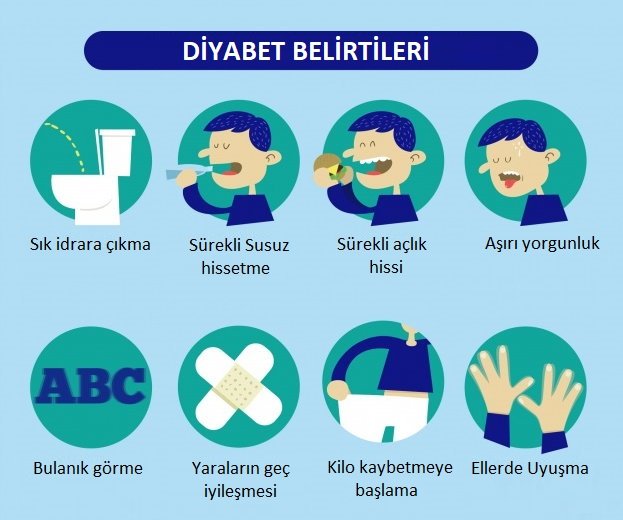
The syndrome of insulin resistance and acanthosis nigricans type A is caused by a decrease in the number of insulin receptors and post-receptor defects. It occurs in young women and is associated with ovarian dysfunction (androgen overproduction and estrogen underproduction) and hirsutism. Acantosis nigricans (Fig. 5) or “black acanthosis” is a papillary-pigmented degeneration of the skin, manifested by hyperkeratosis and hyperpigmentation mainly in the inguinal and axillary regions. Acantosis nigricans is considered a dermatological manifestation of severe insulin resistance [7]. At type B insulin resistance syndrome impaired insulin action due to the presence of antibodies to its receptors.
Severe hyperpigmentation is also observed with hemochromatosis. In this autosomal recessive inherited disease, iron accumulates in the body due to its increased absorption in the intestine. In addition to hyperpigmentation, clinical manifestations of hemochromatosis are liver cirrhosis, heart damage, and diabetes.
Skin damage caused by metabolic disorders also includes lipoid necrobiosis . Since lipid grains are found on histological examination, this lesion is sometimes called skin dyslipoidosis. Lipoid necrobiosis is considered as an independent disease. It is based on microangiopathy, which entails disorganization of the connective tissue with the deposition of lipids in it (collagen lipoid dystrophy) and subsequent necrobiosis.
As an independent disease, lipoid necrobiosis occurs in 10% of patients; 24% of patients are characterized by impaired glucose tolerance and burdened by diabetes heredity. In 66% of cases, lipoid necrobiosis develops against the background of DM. In women, this lesion occurs three times more often than in men. Lipoid necrobiosis affects less than 1% (0.3-0.7%) of patients with diabetes, more often patients with type 1 diabetes.
We present a typical case of a combination of lipoid necrobiosis and type 1 diabetes.
Patient A. , 21 years old, was observed in the onset of diabetes mellitus department of the ERC from 09/05/2006 to 09/18/2006 with a diagnosis of type 1 diabetes mellitus of moderate severity, subcompensation stage; diabetic polyneuropathy of the lower extremities; obesity of the 1st degree; lipoid necrobiosis of the right leg. Upon admission, she complained of hyperglycemia up to 20 mmol/l, overweight (over the past year, weight gain of 5–7 kg), episodic numbness and tingling in the lower extremities, the presence of rounded dark red spots with clear contours on the anterior surface of the right lower leg 2 -5 cm in diameter, painless, with periodic foci of suppuration in the center.
, 21 years old, was observed in the onset of diabetes mellitus department of the ERC from 09/05/2006 to 09/18/2006 with a diagnosis of type 1 diabetes mellitus of moderate severity, subcompensation stage; diabetic polyneuropathy of the lower extremities; obesity of the 1st degree; lipoid necrobiosis of the right leg. Upon admission, she complained of hyperglycemia up to 20 mmol/l, overweight (over the past year, weight gain of 5–7 kg), episodic numbness and tingling in the lower extremities, the presence of rounded dark red spots with clear contours on the anterior surface of the right lower leg 2 -5 cm in diameter, painless, with periodic foci of suppuration in the center.
From the anamnesis: suffers from type 1 diabetes since 1997 (from the age of 12) for 9 years. Constantly receiving intensified insulin therapy (Protafan, Aktrapid). At the time of admission, the total daily dose of Protafan – 30 units, Aktrapida – 38 units.
On examination: height – 170 cm, body weight – 90 kg, BMI – 31 kg/m2.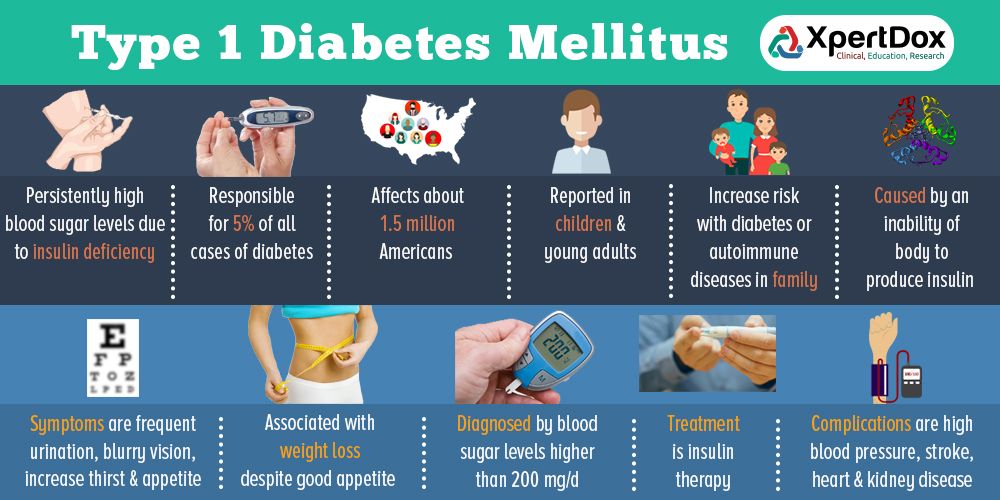 Heart sounds are clear, rhythmic, pulse is 89 bpm, blood pressure is 130/85 mm Hg. Art. The pulsation in the arteries of the feet is satisfactory.
Heart sounds are clear, rhythmic, pulse is 89 bpm, blood pressure is 130/85 mm Hg. Art. The pulsation in the arteries of the feet is satisfactory.
Status localis: on the skin of the anterior and lateral surfaces of the right leg, rounded dark red spots with clear contours from 2 to 5 cm in diameter are determined, painless, without foci of suppuration. The central zone of these areas is slightly atrophic and compacted, the pattern is smoothed; through the epidermis, dilated vessels of the dermis are visible; hair follicles in these areas are absent; the peripheral zone slightly rises above the lesions. Periodically plaques ulcerate.
The first spot appeared on the skin of the right leg 5–6 years after the onset of the disease. In subsequent years, new spots began to appear. Dermatologists recommended various NSAID ointments, but no positive effect was noted.
The patient was examined in the office of the “Diabetic foot”: vibration sensitivity – 4 conventional units. units at both sides; pain and temperature sensitivity is preserved, the pulsation in the arteries of the feet is satisfactory on both sides. Conclusion: Distal diabetic polyneuropathy of the lower extremities. Lipoid necrobiosis.
units at both sides; pain and temperature sensitivity is preserved, the pulsation in the arteries of the feet is satisfactory on both sides. Conclusion: Distal diabetic polyneuropathy of the lower extremities. Lipoid necrobiosis.
Laboratory results: HbA1c – 7.5%; complete blood count – no features; urinalysis: glucose – 5.5 mmol/l; ketone bodies – traces; biochemical blood test: total cholesterol – 4.8 mmol / l, triglycerides – 1.4 mmol / l, LDL – 3.0 mmol / l, HDL – 1.49 mmol / l.
The patient underwent insulin therapy according to the scheme: Actrapid 8–10 units before the main meals, Lantus 24 units at 22.00, as well as injections of milgamma 2.0 intramuscularly No. 10.
It is recommended to use the Advantan ointment on the foci of lipoid necrobiosis, to avoid injuries and infection of the affected area. Observation of the endocrinologist at the place of residence. It is also recommended to apply for consultation and conduct a puncture biopsy of lesions in the Central Research Institute of the Federal Health Agency.
Skin manifestations of necrobiosis lipoidis most often occur for the first time against the background of already existing diabetes (60%). They precede DM in 25% of cases and appear with DM in 15% [9].]. Autoimmune etiology of lipoid necrobiosis is not excluded.
Among the possible mechanisms for the development of skin lesions in DM are considered: diabetic microangiopathy, hypercoagulability, lipoid degeneration of collagen, inflammation, the ratio of immune complexes, trauma and hereditary predisposition.
Puncture biopsy reveals atrophy of the epidermis; in the lower part of the dermis there are foci of collagen necrobiosis, along the periphery of which, as well as in the thickness of the entire dermis, there are perivascular lymphohistiocytic infiltrates. Proliferation of the endothelium is noted, the lumen of the vessels is narrowed, in the middle part of the dermis there are completely clogged small vessels. Yellow color to plaques is given by xanthoma cells.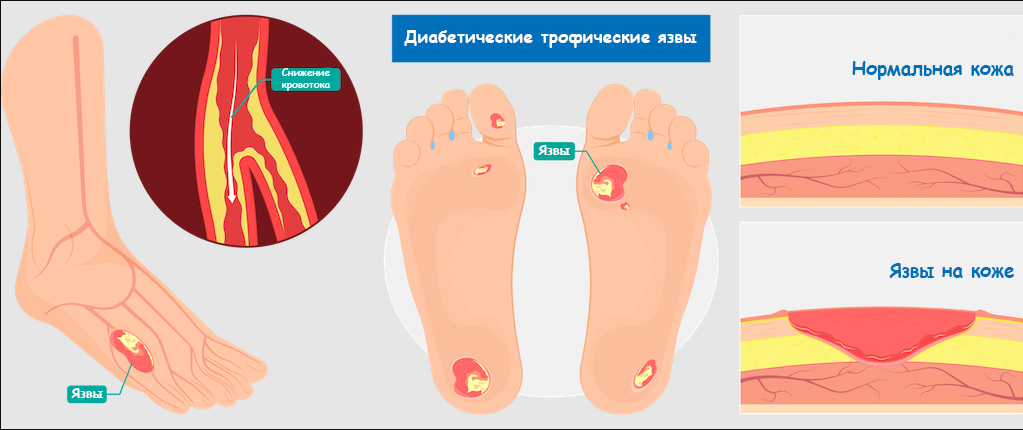 There is no metachromatic staining [10, 13]. Immunofluorescent staining reveals Ig and C3 components. Immune complexes are sometimes deposited in the walls of arterioles, capillaries, and venules.
There is no metachromatic staining [10, 13]. Immunofluorescent staining reveals Ig and C3 components. Immune complexes are sometimes deposited in the walls of arterioles, capillaries, and venules.
According to the WHO classification, two clinical forms of lipoid necrobiosis are distinguished in diabetes mellitus: classical (large single lesions, more common on the skin of the legs, often with ulcerations) and atypical with two variants of the course: scleroderma-like and superficial plaque.
As a rule, in patients with DM, large single lesions are localized on the skin of the anterior surface of the legs, less often on the feet and hands. In patients who do not suffer from DM, plaques are represented by small multiple foci localized on the thighs, forearms, torso, and scalp.
The disease begins with the appearance of small bluish-pink spots or smooth flat nodules, rounded or irregular in shape, prone to peripheral growth. Later, clearly delimited elongated oval plaques 1–10 cm or more in size are formed, in which central and peripheral zones are distinguished (Fig. 6). The central zone has a sclero-like appearance: the skin is atrophic with a smoothed pattern, waxy-yellow in color, dilated vessels of the dermis are visible through the epidermis. The peripheral zone slightly rises above the surface in the form of a narrow dense bluish-red roller.
6). The central zone has a sclero-like appearance: the skin is atrophic with a smoothed pattern, waxy-yellow in color, dilated vessels of the dermis are visible through the epidermis. The peripheral zone slightly rises above the surface in the form of a narrow dense bluish-red roller.
Lipoid necrobiosis is characterized by a chronic course. Pain is absent. Patients are concerned about cosmetic defects, a feeling of skin tightening, moderate pain in the area of rashes. Approximately 1/4 of patients have ulceration of the central zone of the foci, accompanied by pain (Fig. 7). After healing of the ulcers, depressed scars remain.
The scleroderma-like variant of the course of lipoid necrobiosis (Fig. 8) should be differentiated from scleroderma (Fig. 9) (Table 2).
Treatment of lipoid necrobiosis is carried out on an outpatient basis, in severe cases – in a hospital (dermatological, therapeutic or endocrinological). Pathogenetic therapy was not found.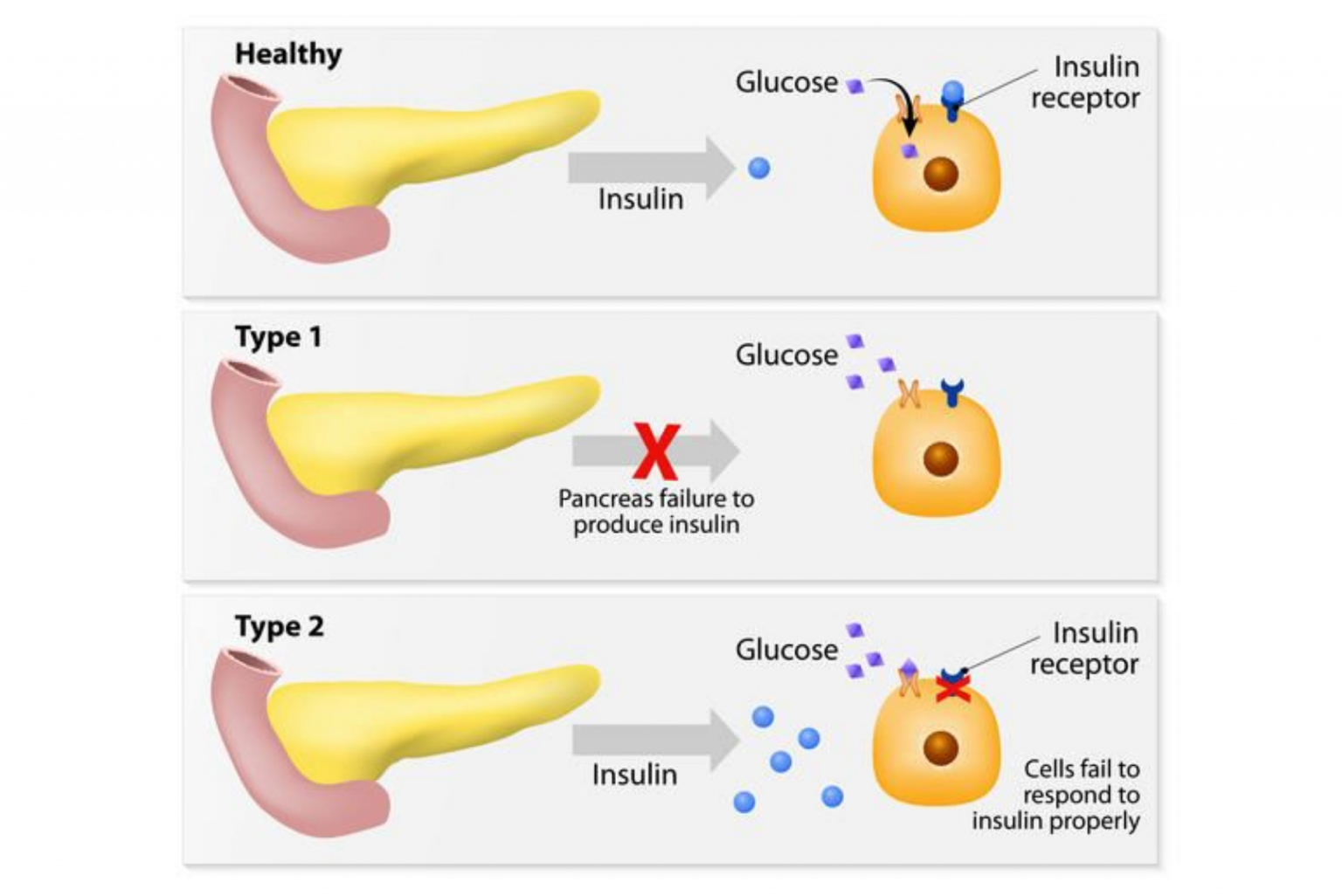 First of all, correction of carbohydrate metabolism is necessary. Since all forms of lipoid necrobiosis are characterized by a tendency to hypercoagulation, rheological and coagulological disorders are corrected, microcirculation parameters are normalized (pentoxifylline, sulodexide, tanakan, aspirin, low molecular weight heparins). A number of authors note the effectiveness of intralesional administration (by injection or phonophoresis) of corticosteroids and heparin [3, 10]. Patients may be recommended applications of a 25-30% solution of dimexide, which increases the permeability of biological membranes for medicinal substances. Also shown are occlusive dressings with fluorine-containing corticosteroid ointments (Elokom, Advantan, Lorinden). With ulceration of the foci, they sometimes resort to surgical intervention (removal of foci with subsequent skin grafting). With an uncomplicated course of lipoid necrobiosis, ointments with NSAIDs (Indovazin, Dolgit, Ibuprofen) can be prescribed.
First of all, correction of carbohydrate metabolism is necessary. Since all forms of lipoid necrobiosis are characterized by a tendency to hypercoagulation, rheological and coagulological disorders are corrected, microcirculation parameters are normalized (pentoxifylline, sulodexide, tanakan, aspirin, low molecular weight heparins). A number of authors note the effectiveness of intralesional administration (by injection or phonophoresis) of corticosteroids and heparin [3, 10]. Patients may be recommended applications of a 25-30% solution of dimexide, which increases the permeability of biological membranes for medicinal substances. Also shown are occlusive dressings with fluorine-containing corticosteroid ointments (Elokom, Advantan, Lorinden). With ulceration of the foci, they sometimes resort to surgical intervention (removal of foci with subsequent skin grafting). With an uncomplicated course of lipoid necrobiosis, ointments with NSAIDs (Indovazin, Dolgit, Ibuprofen) can be prescribed.

